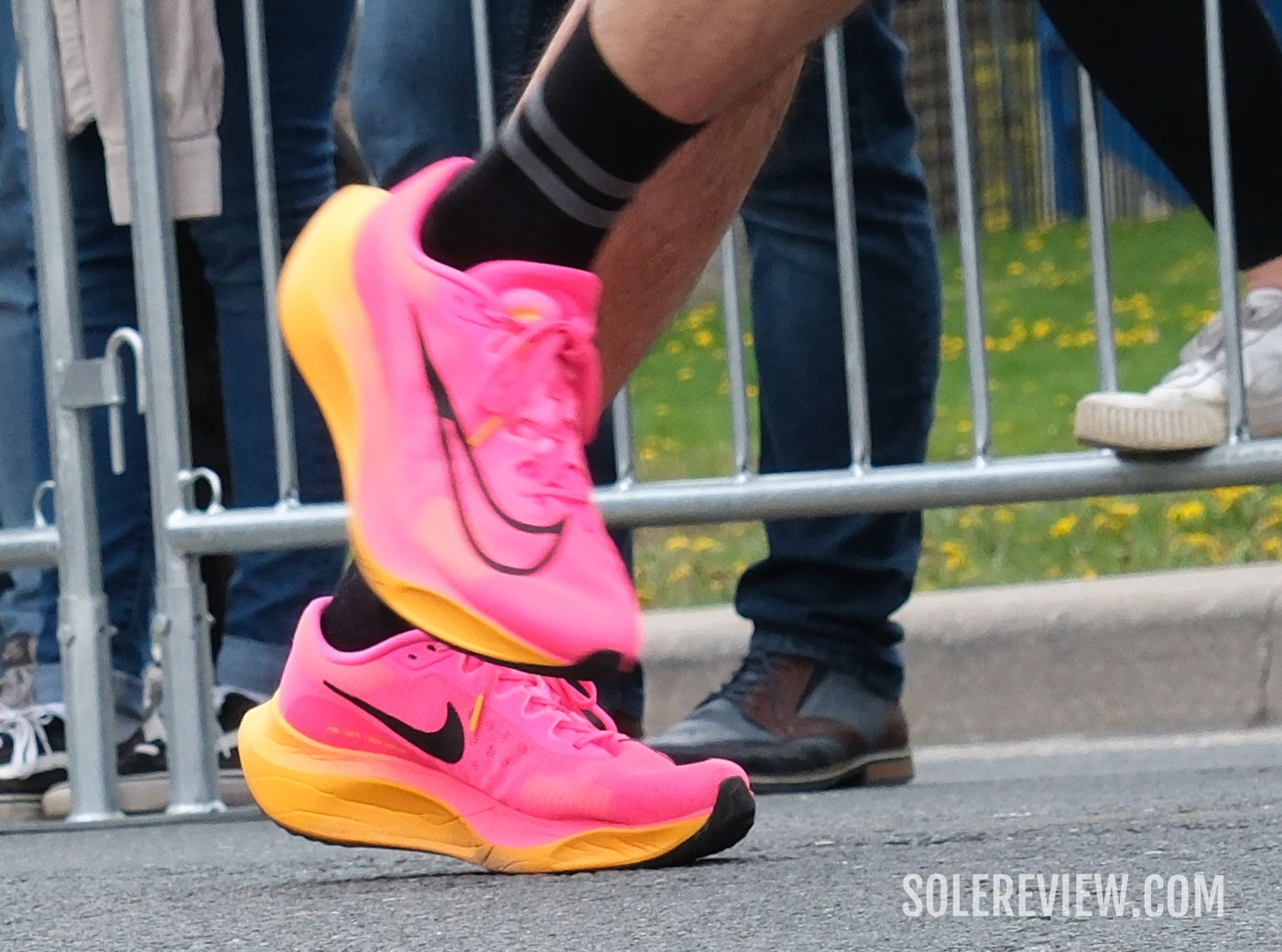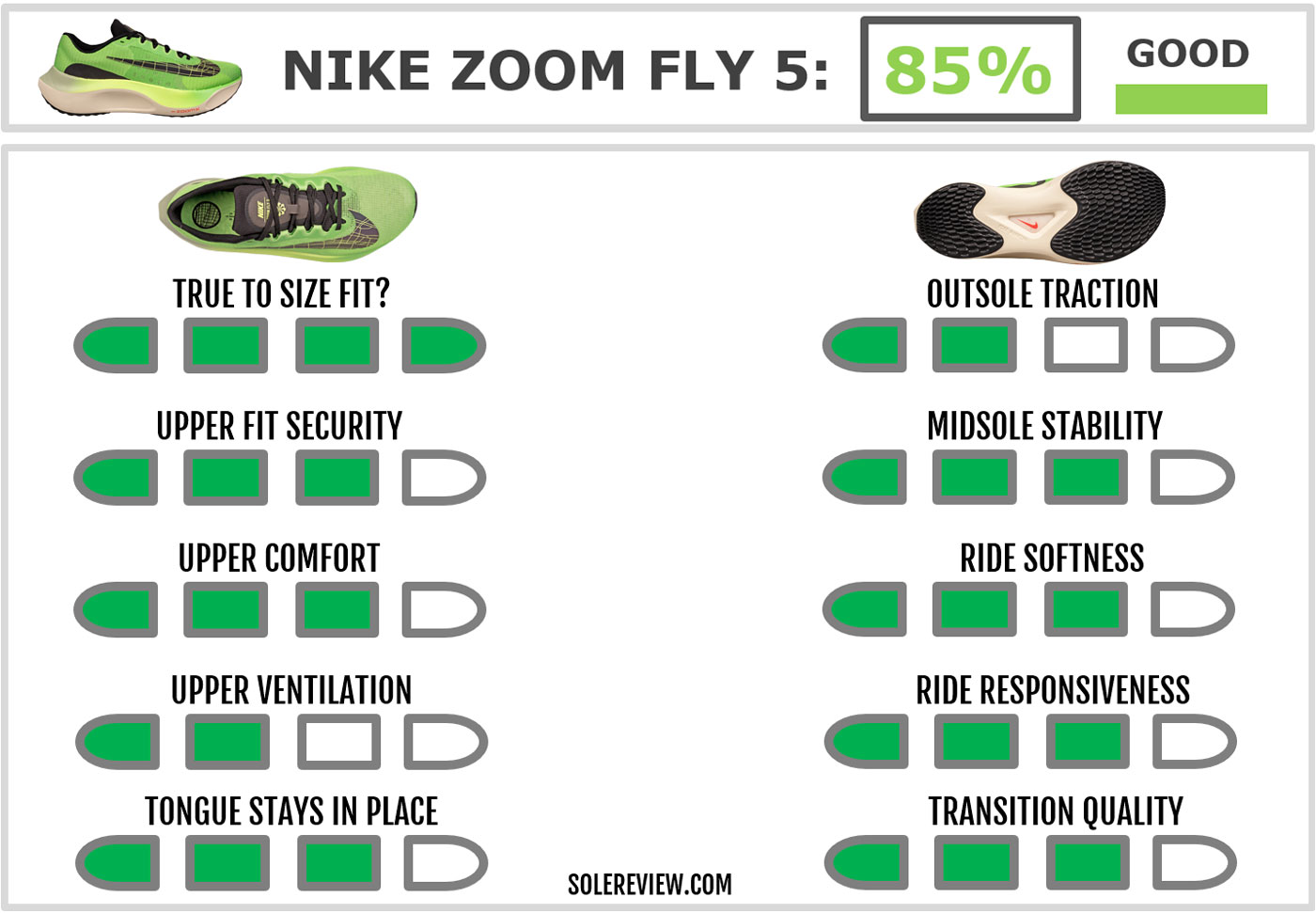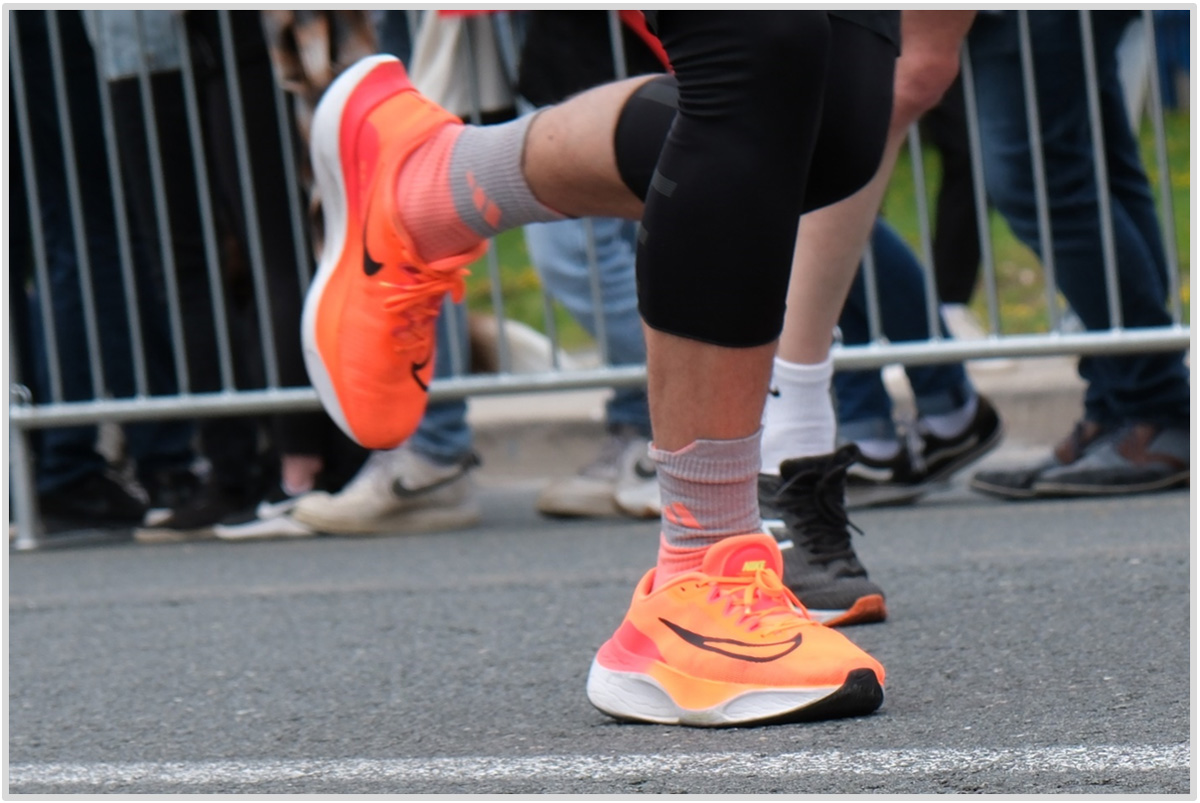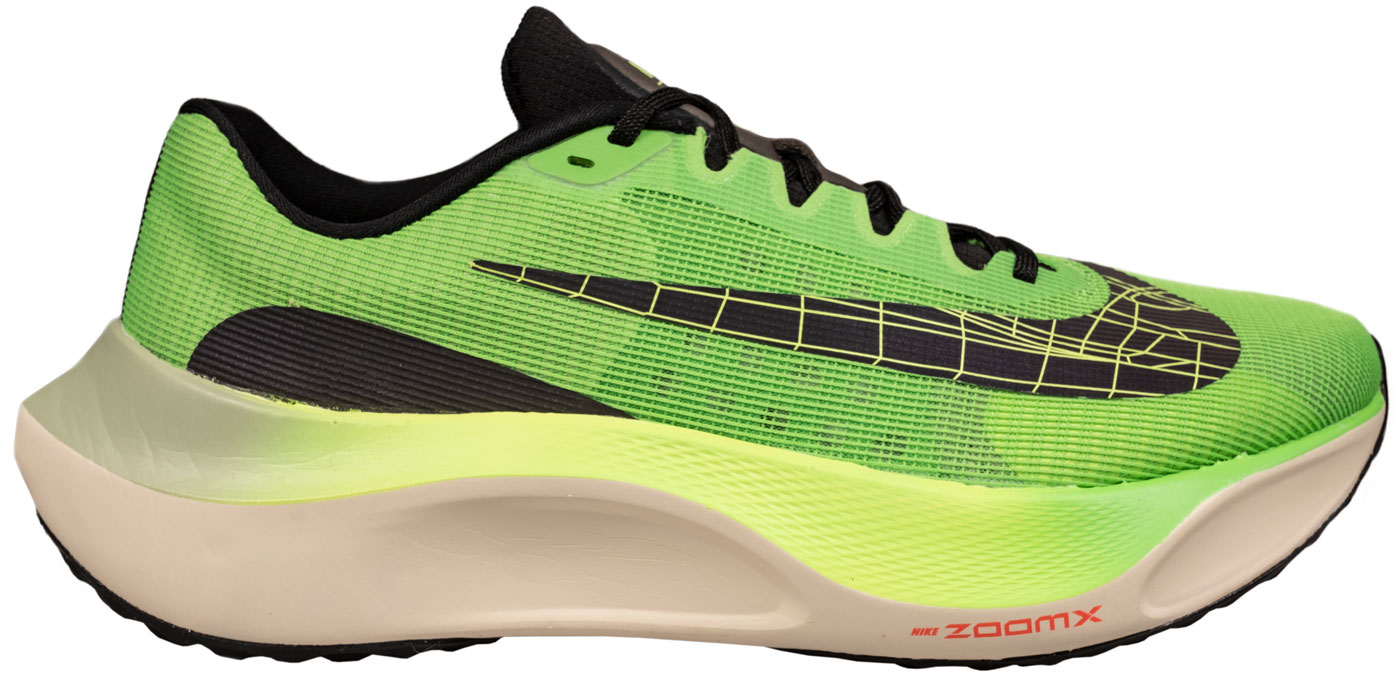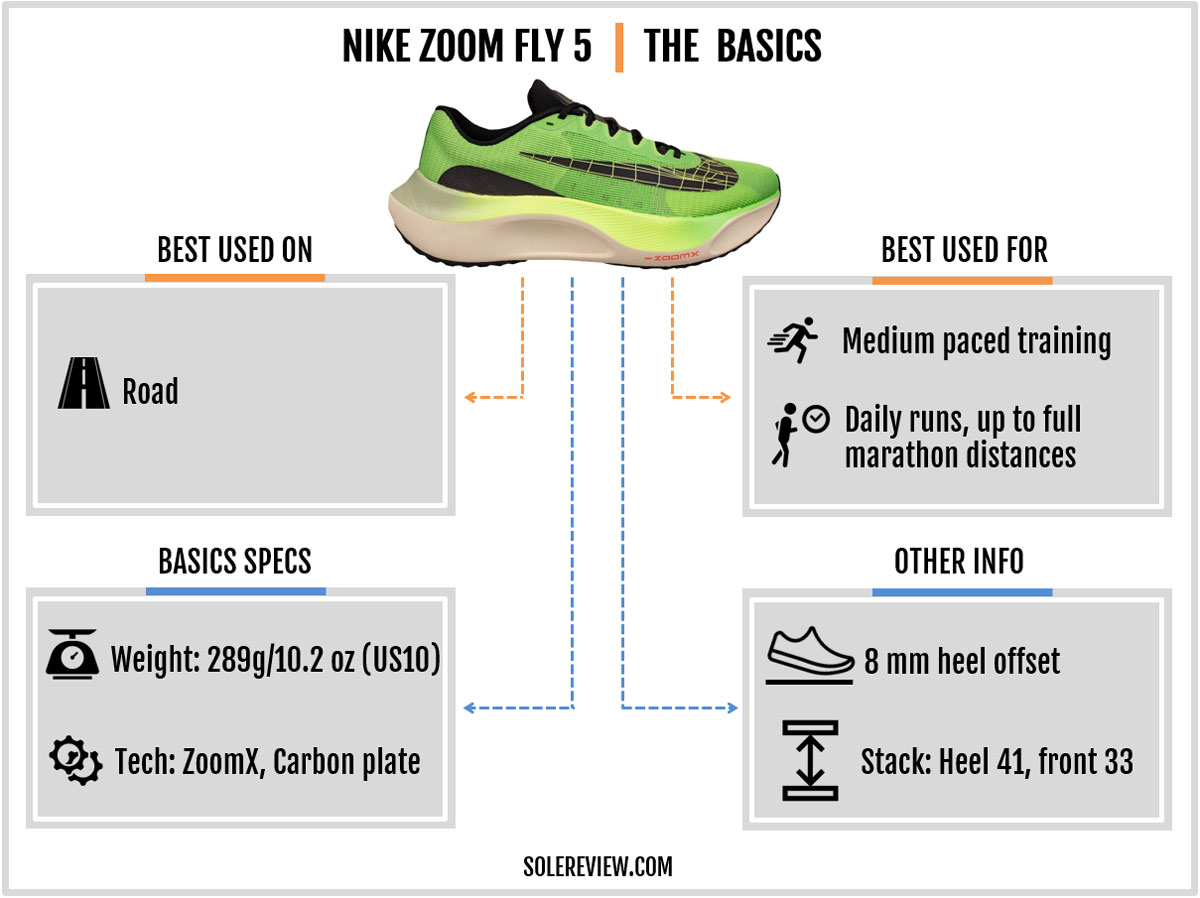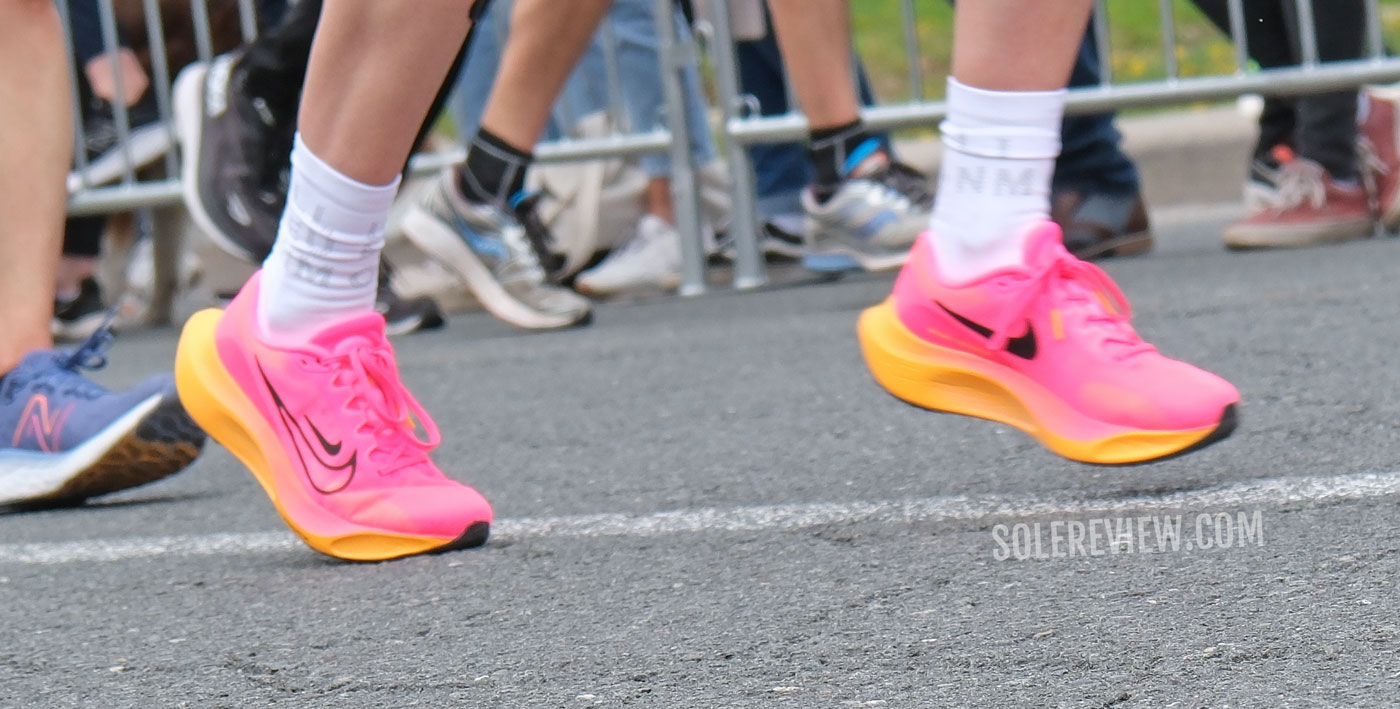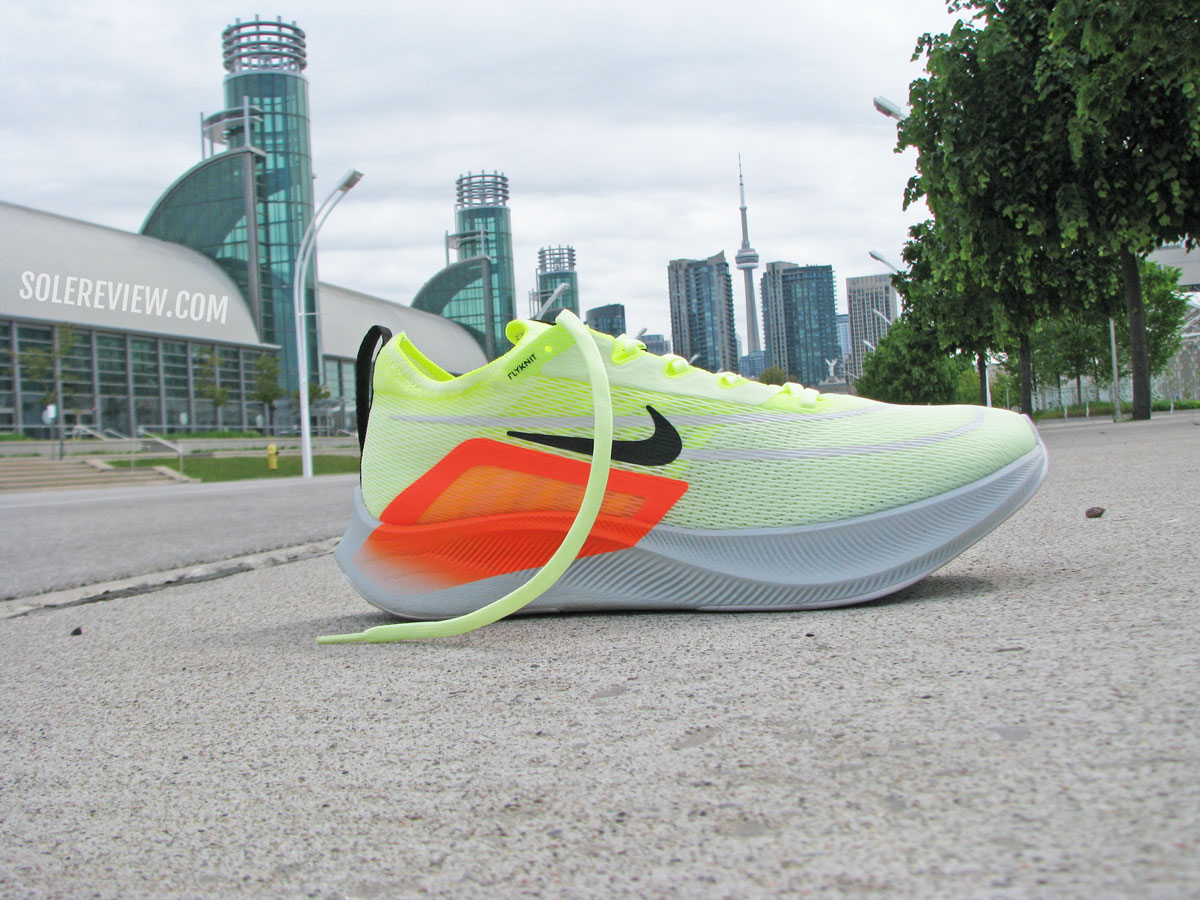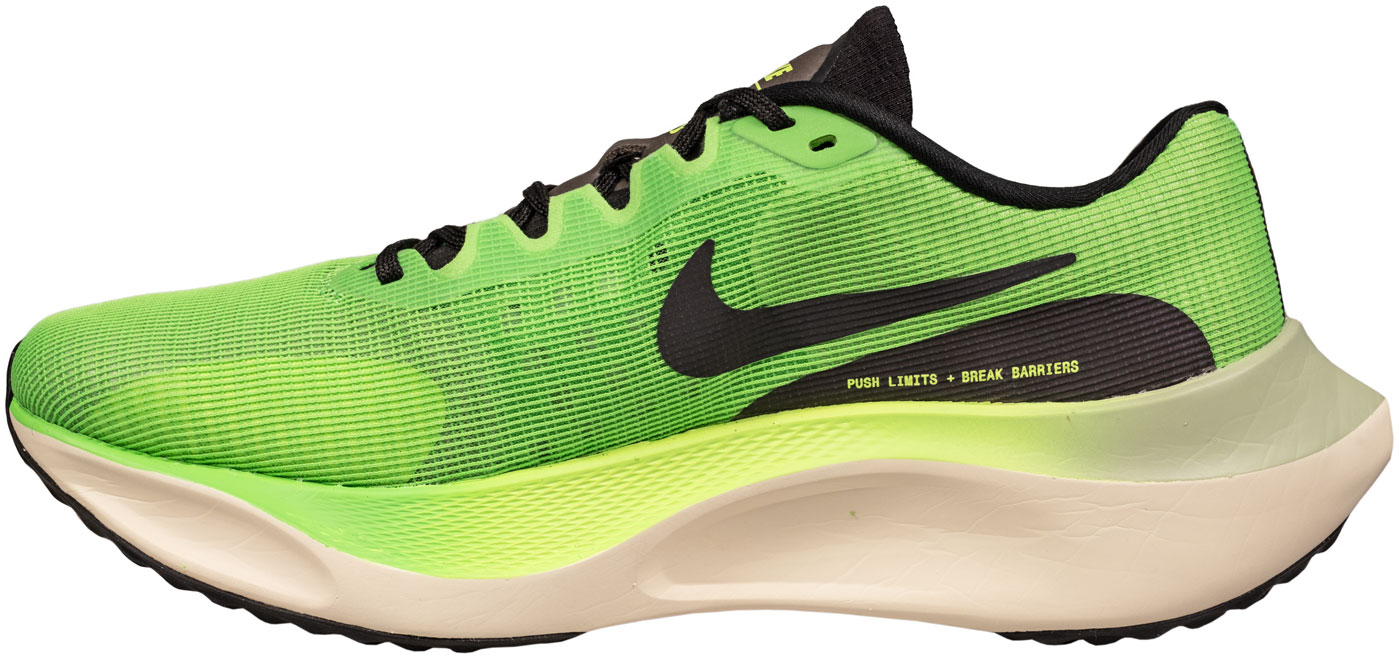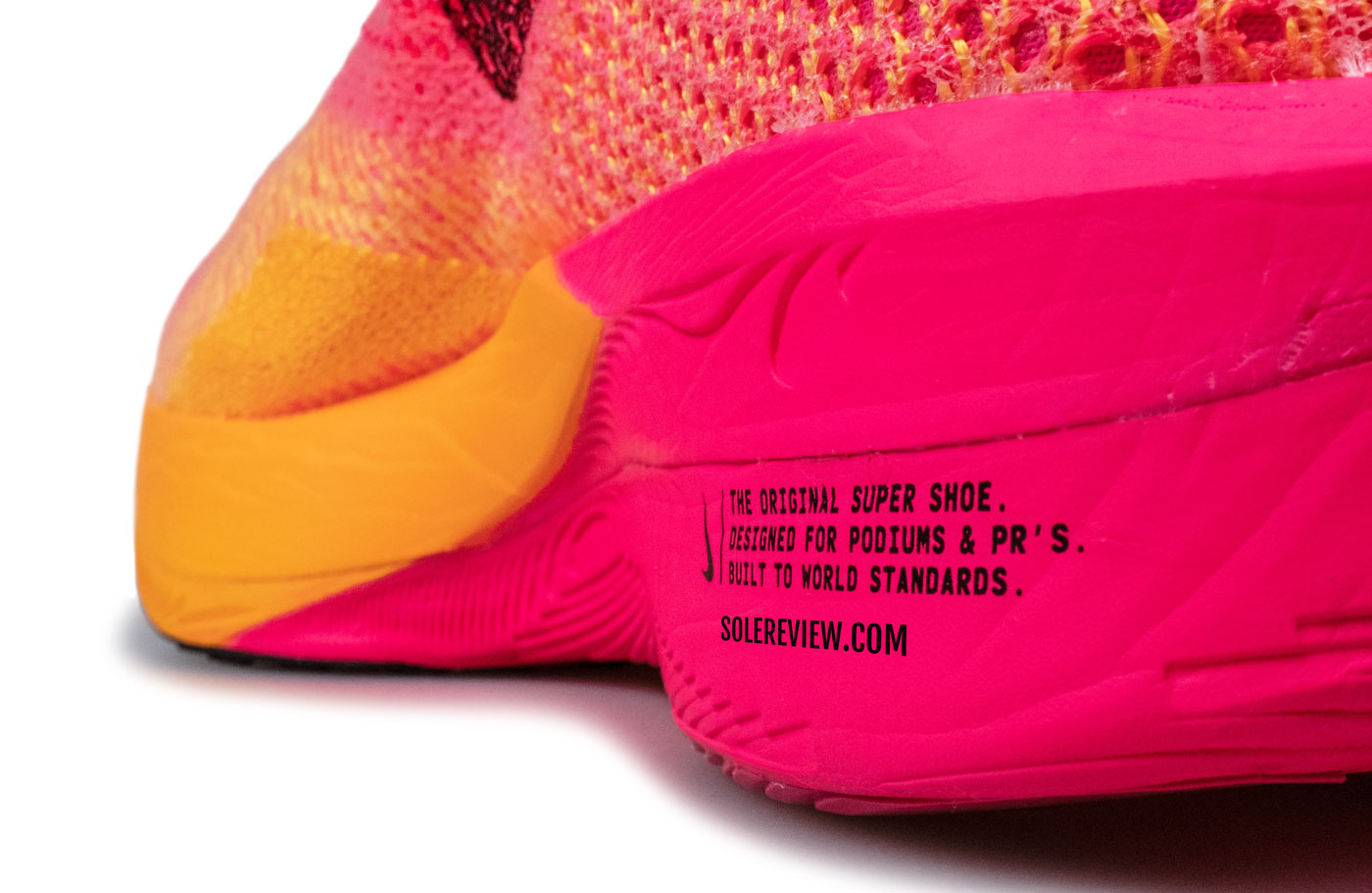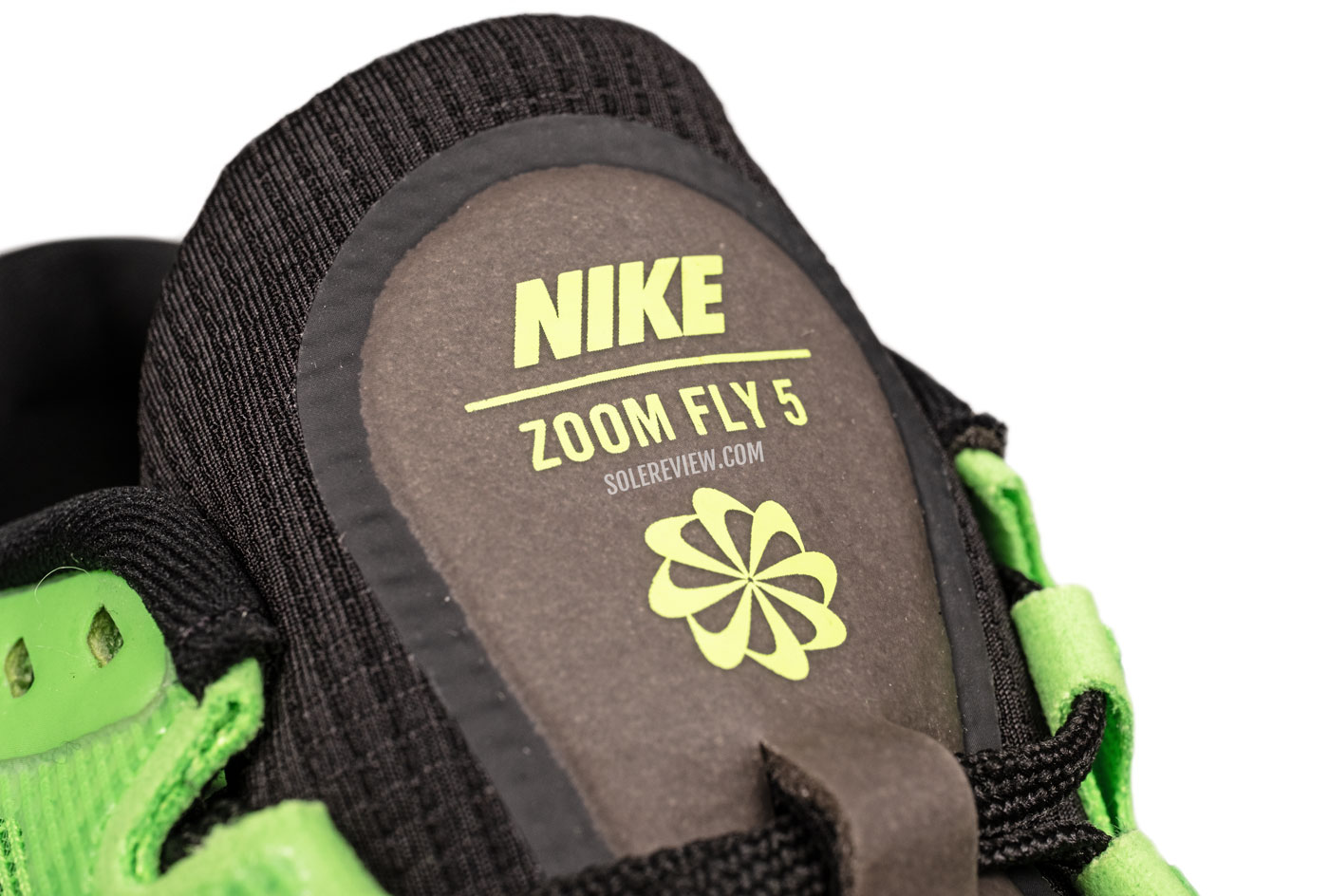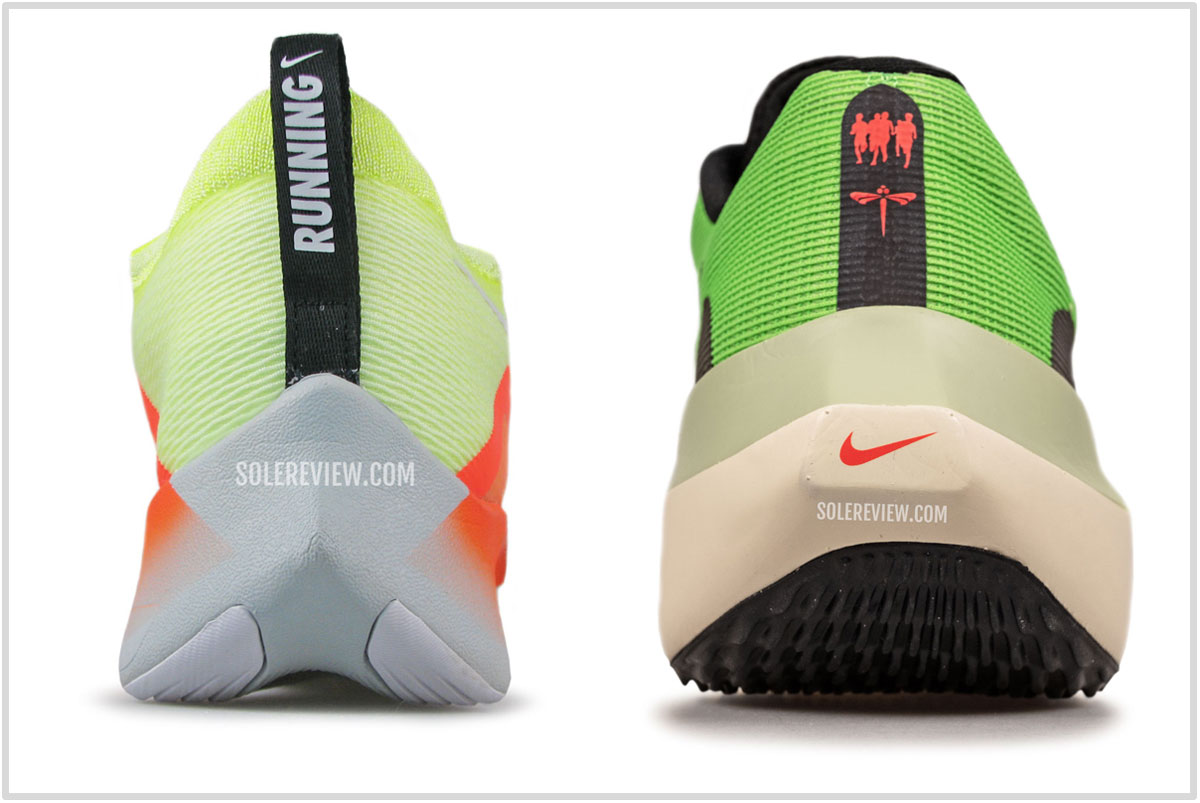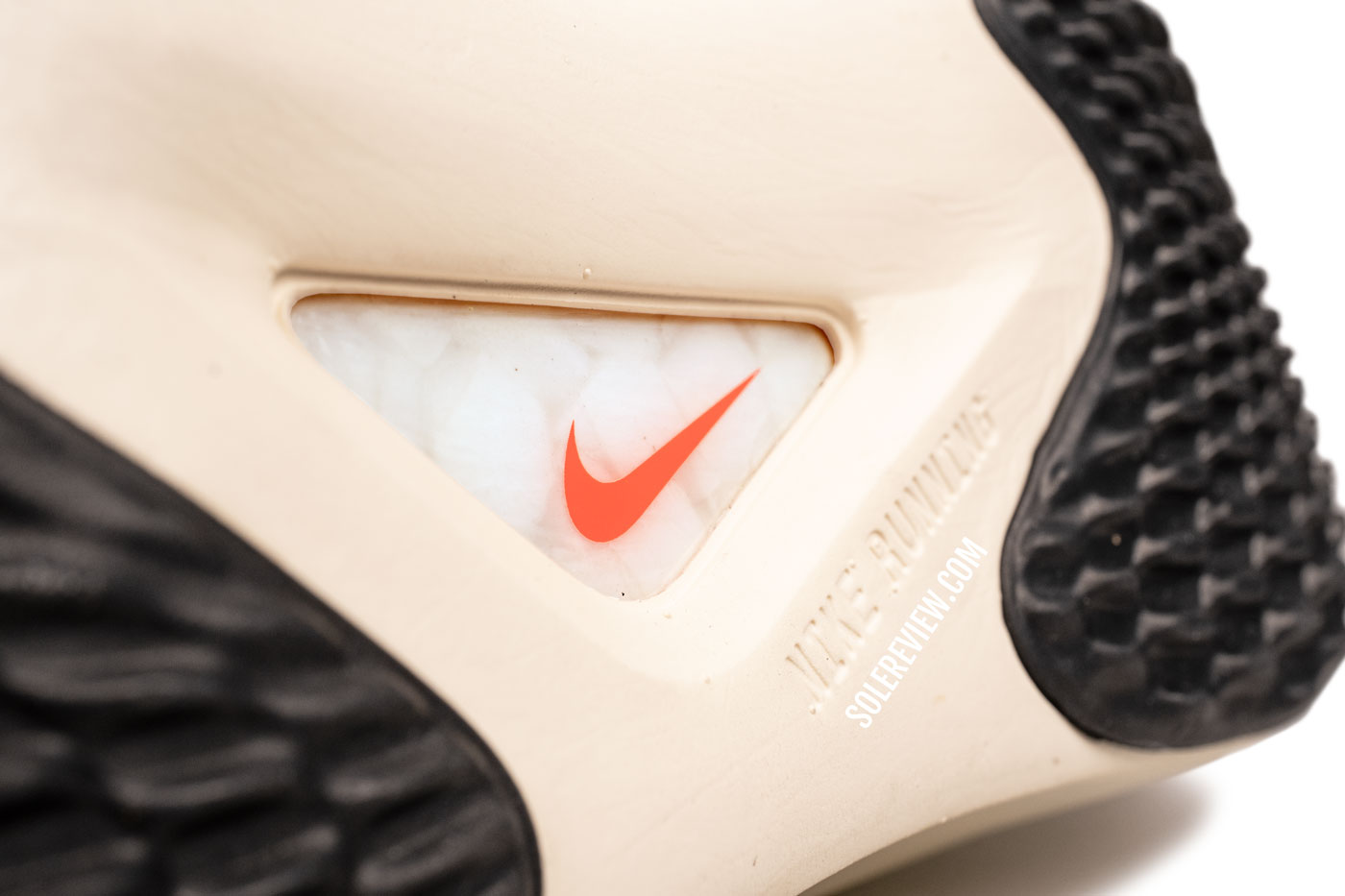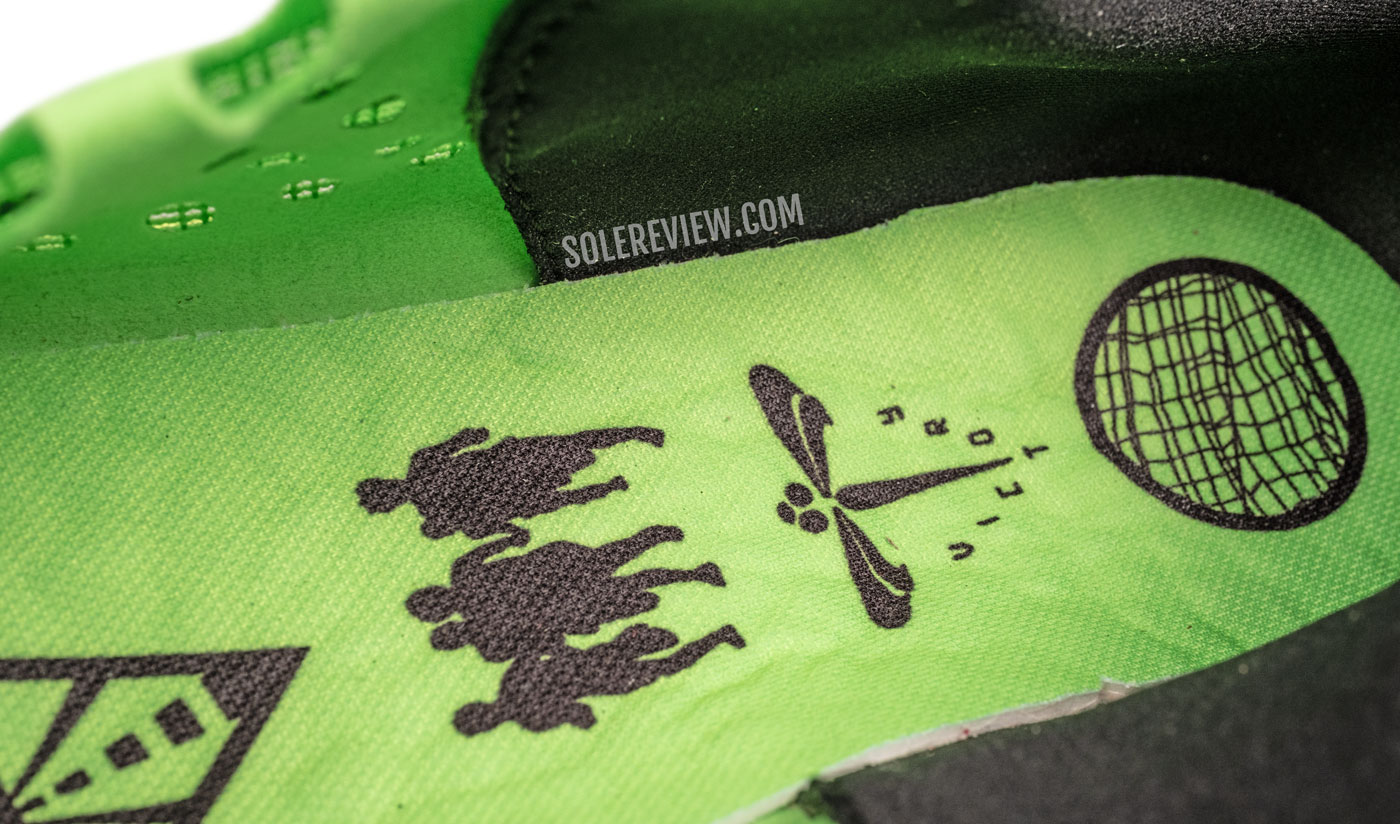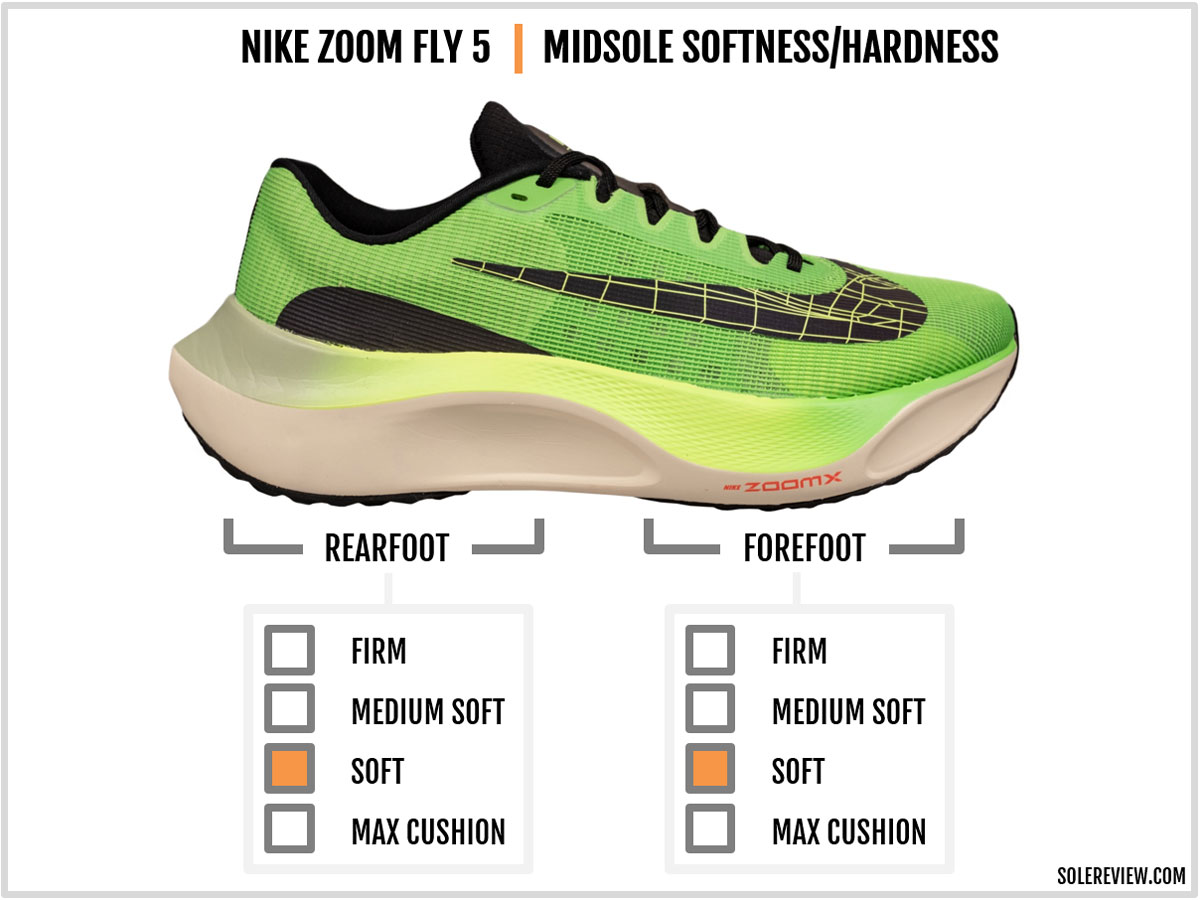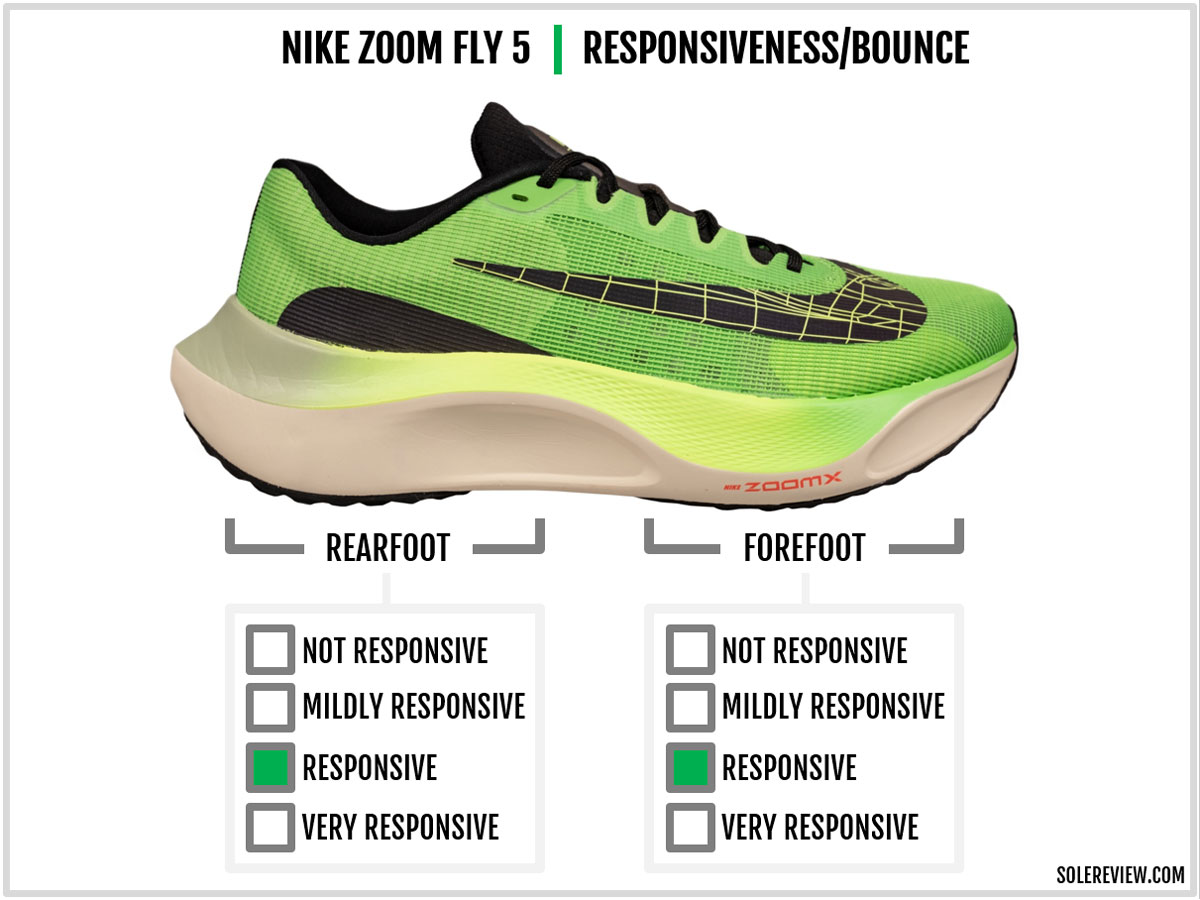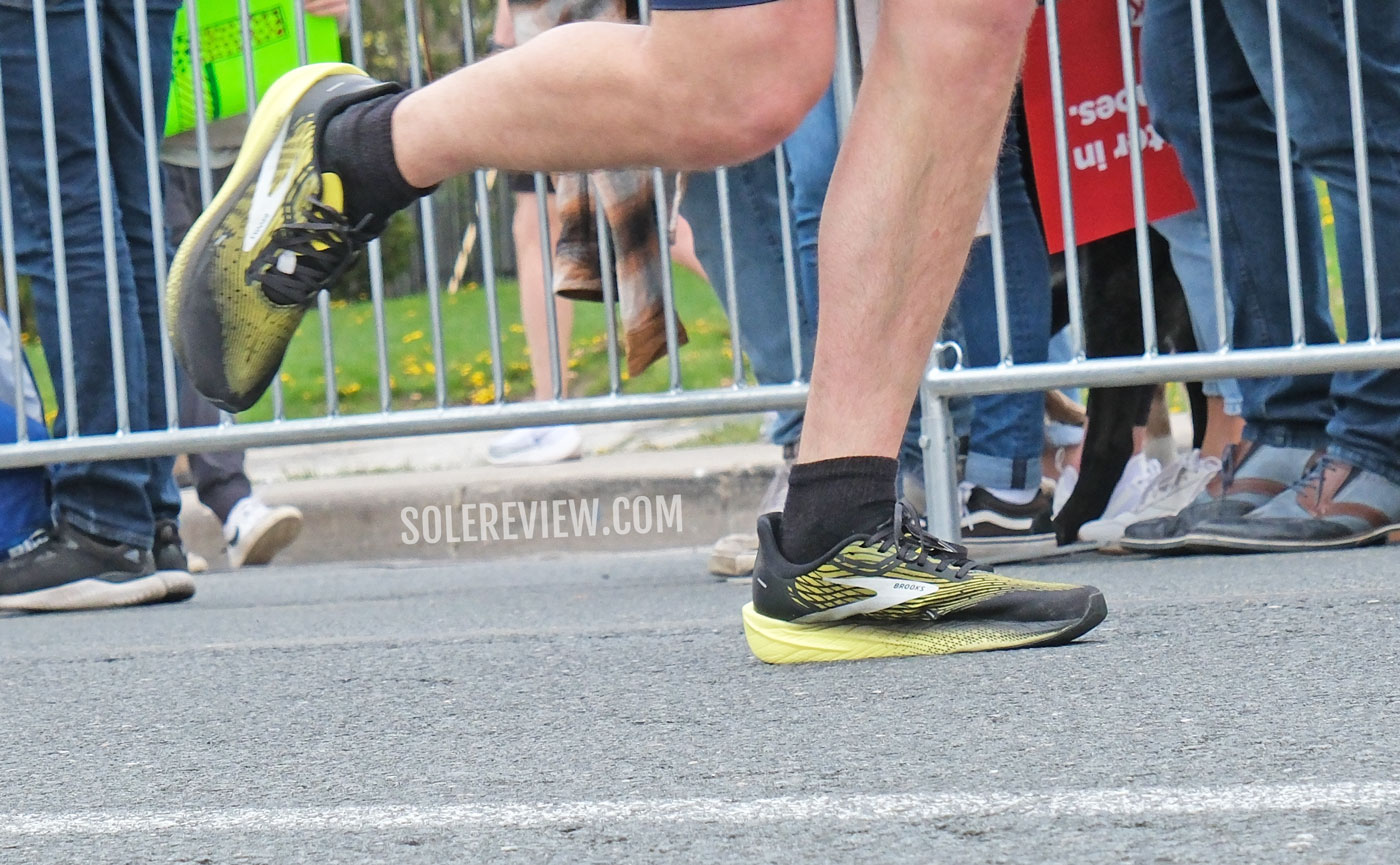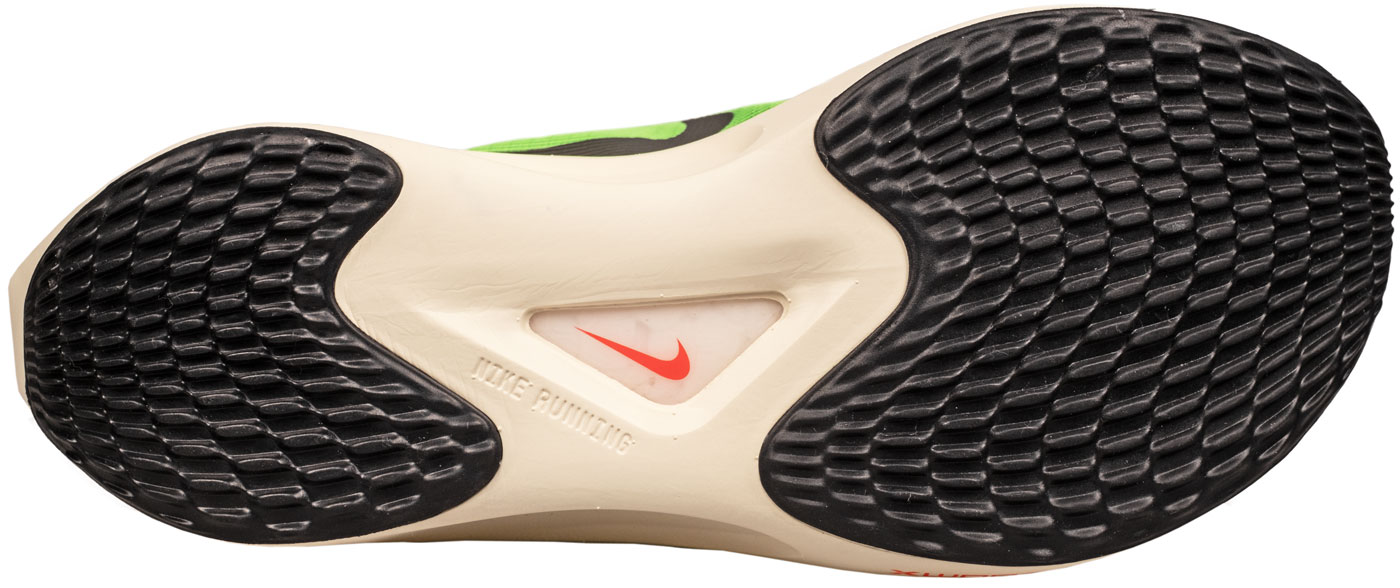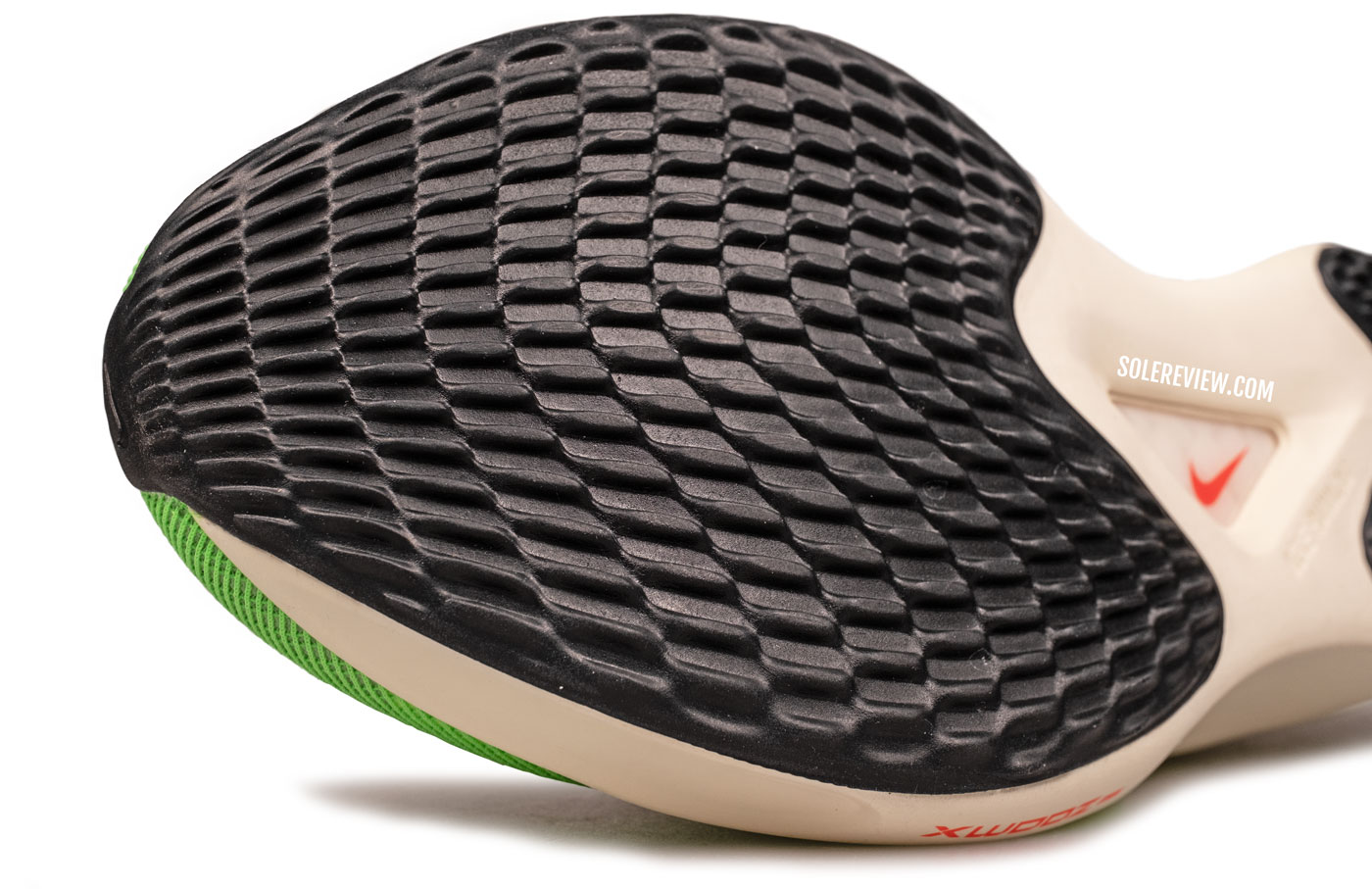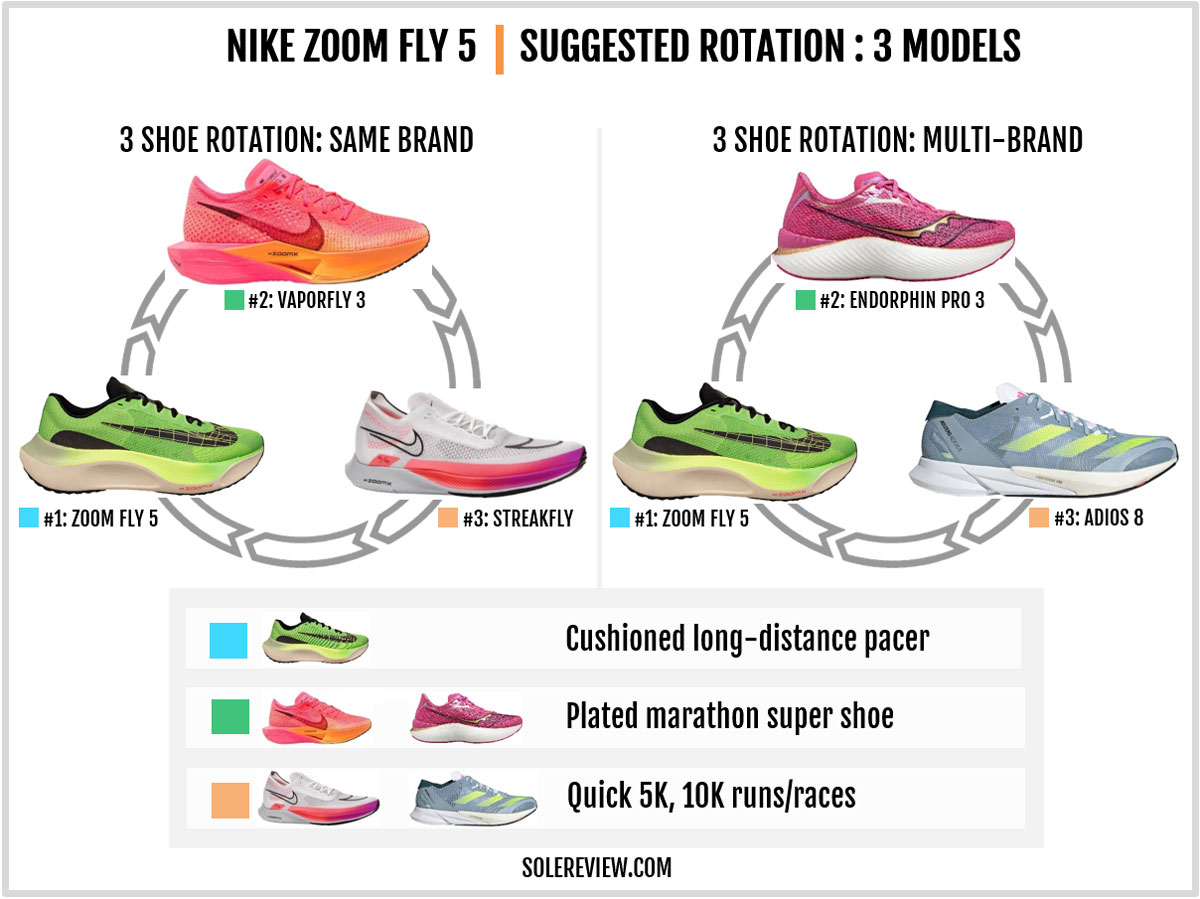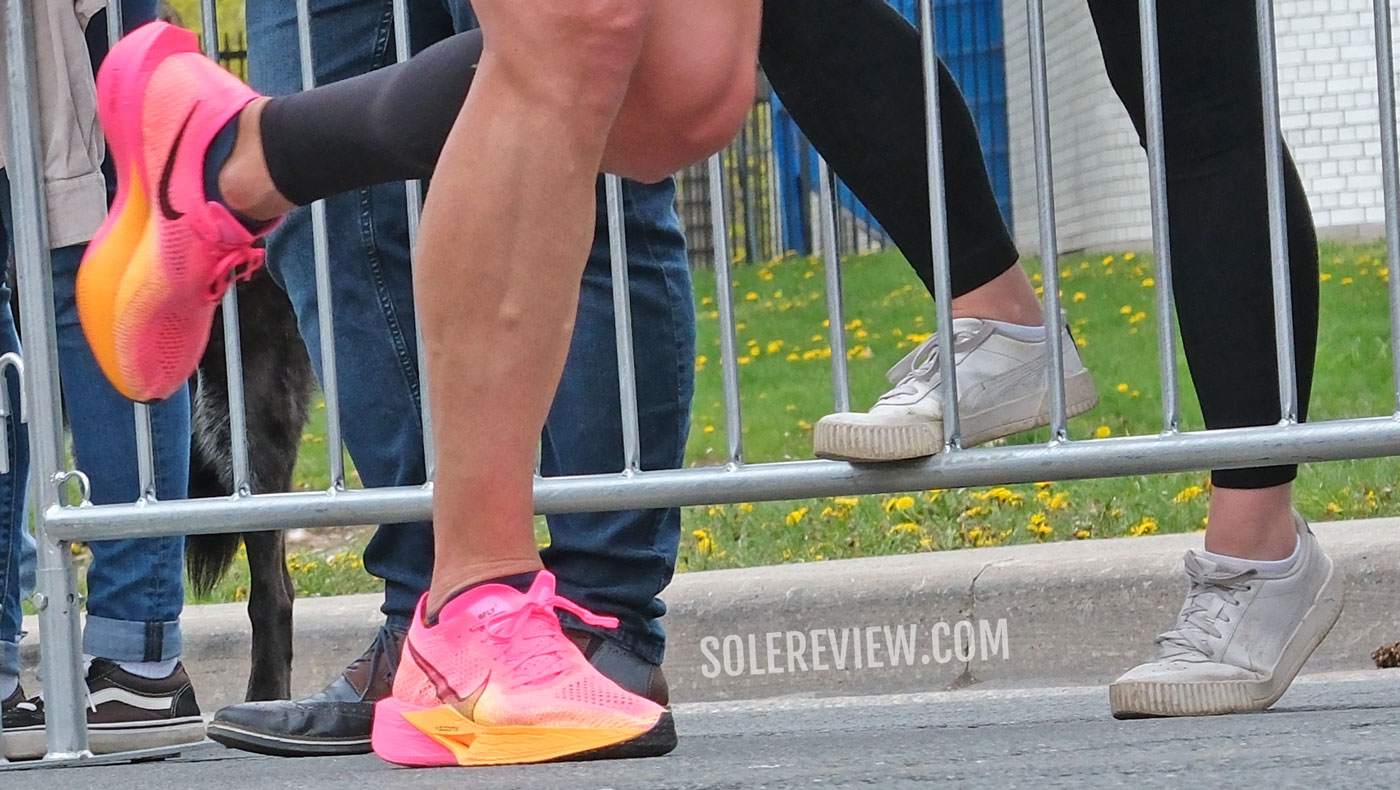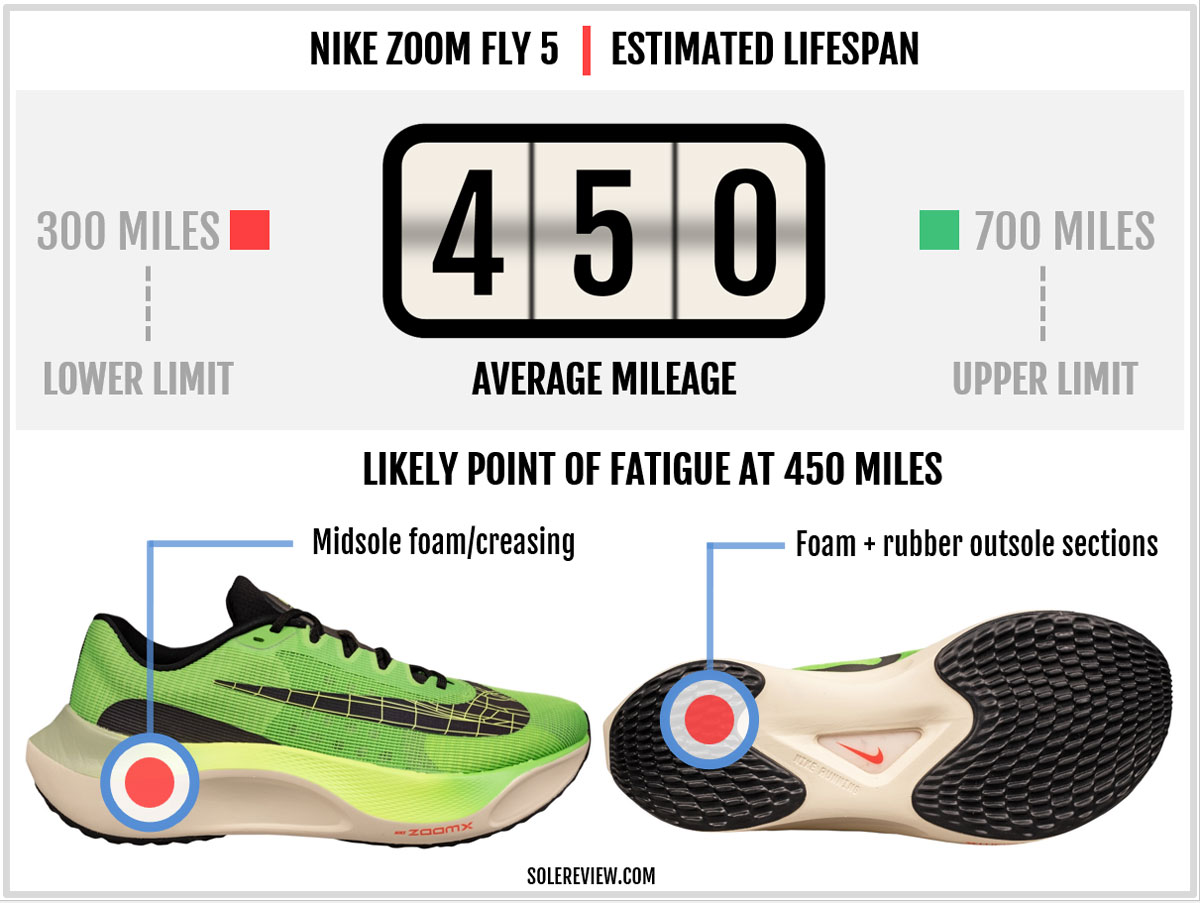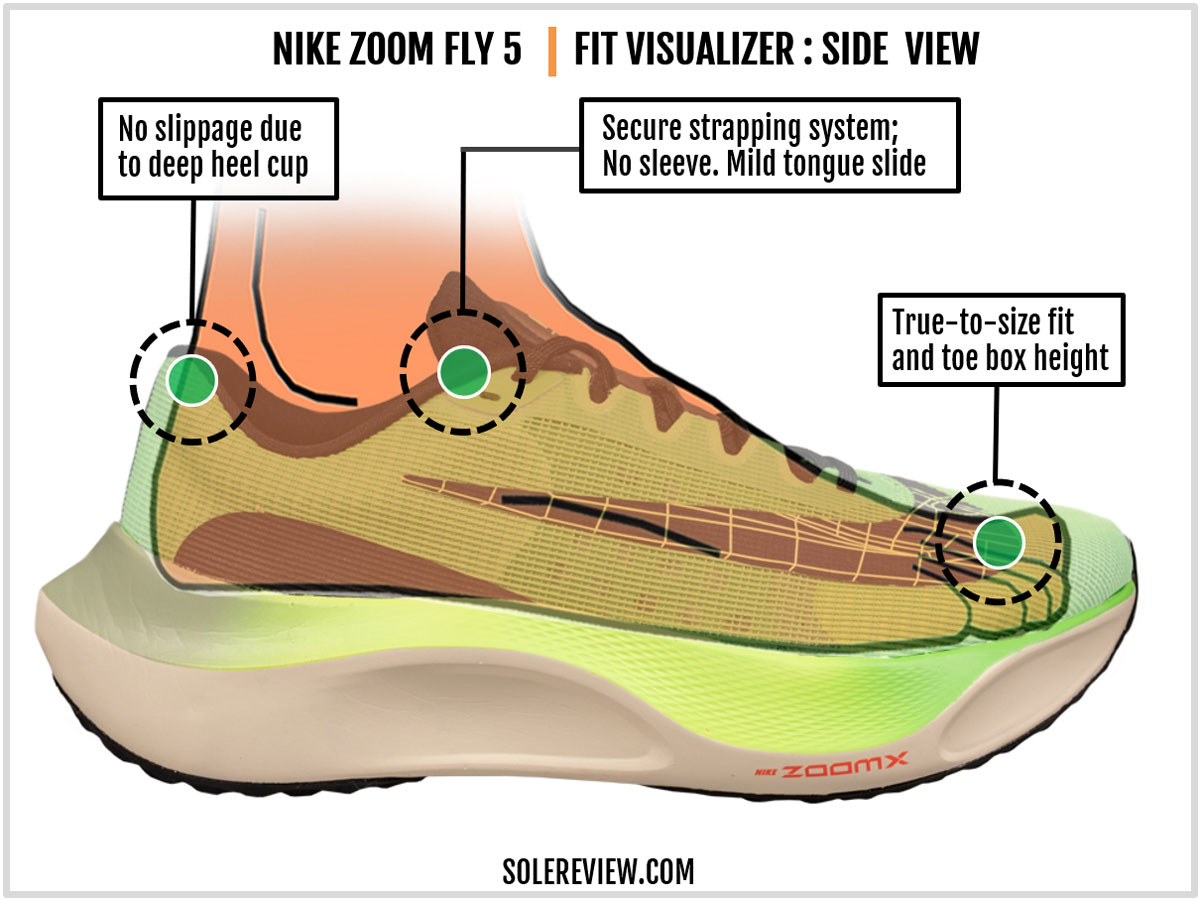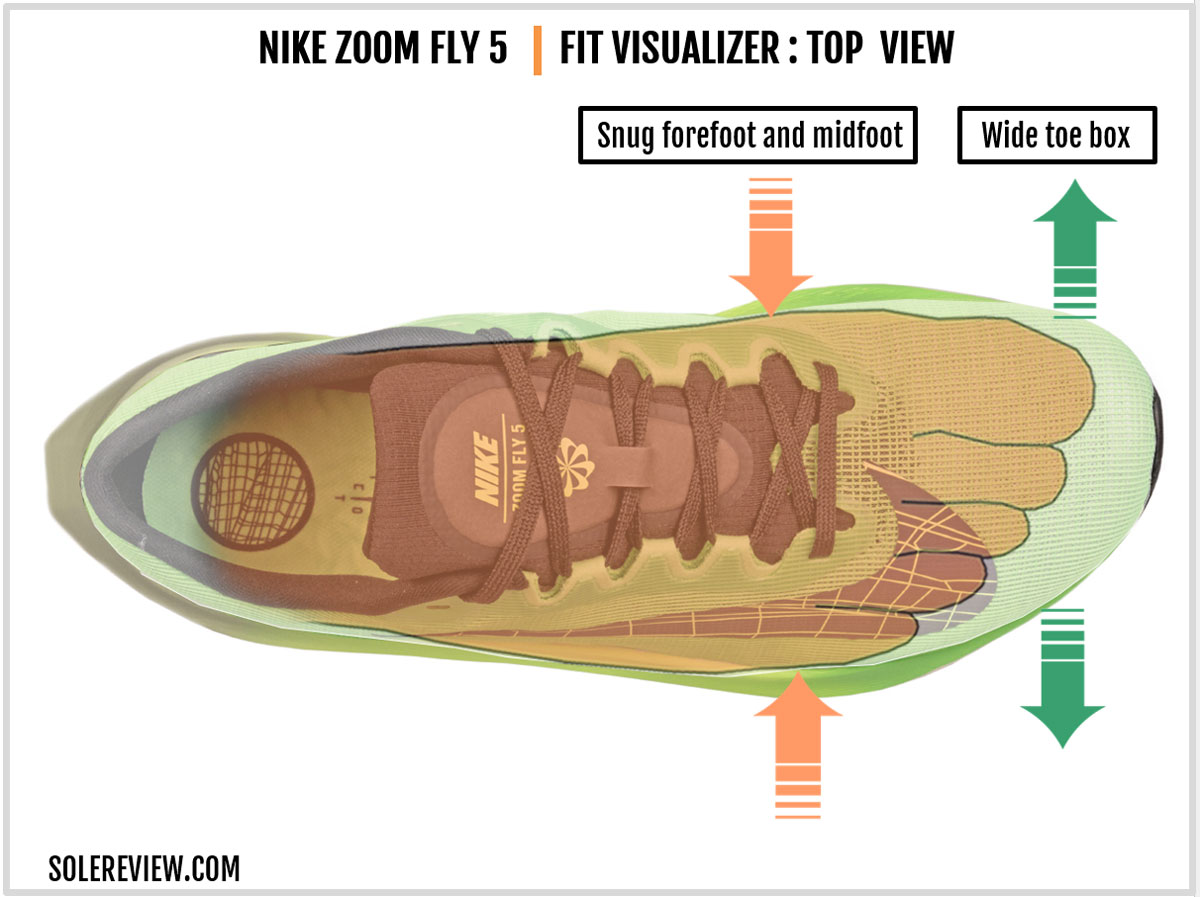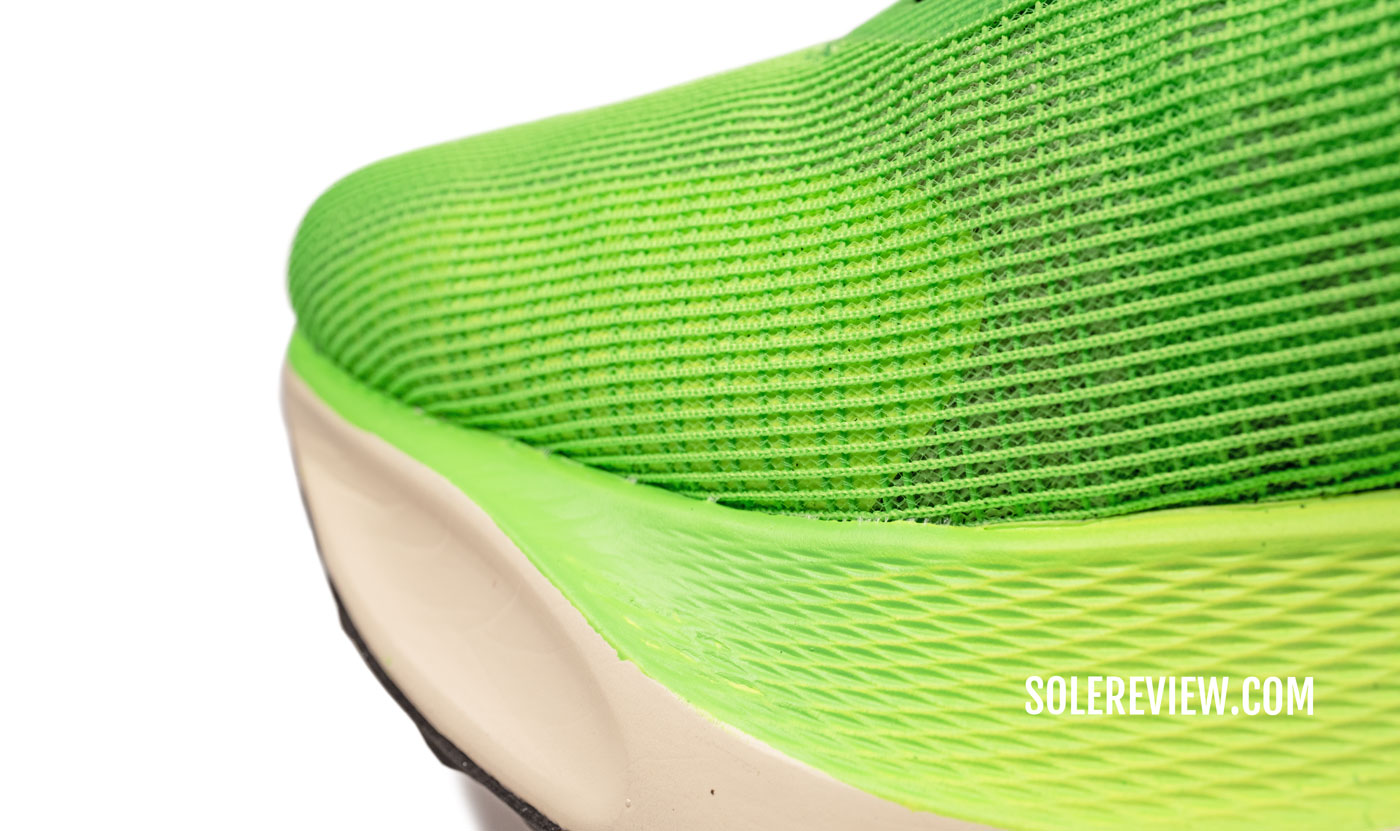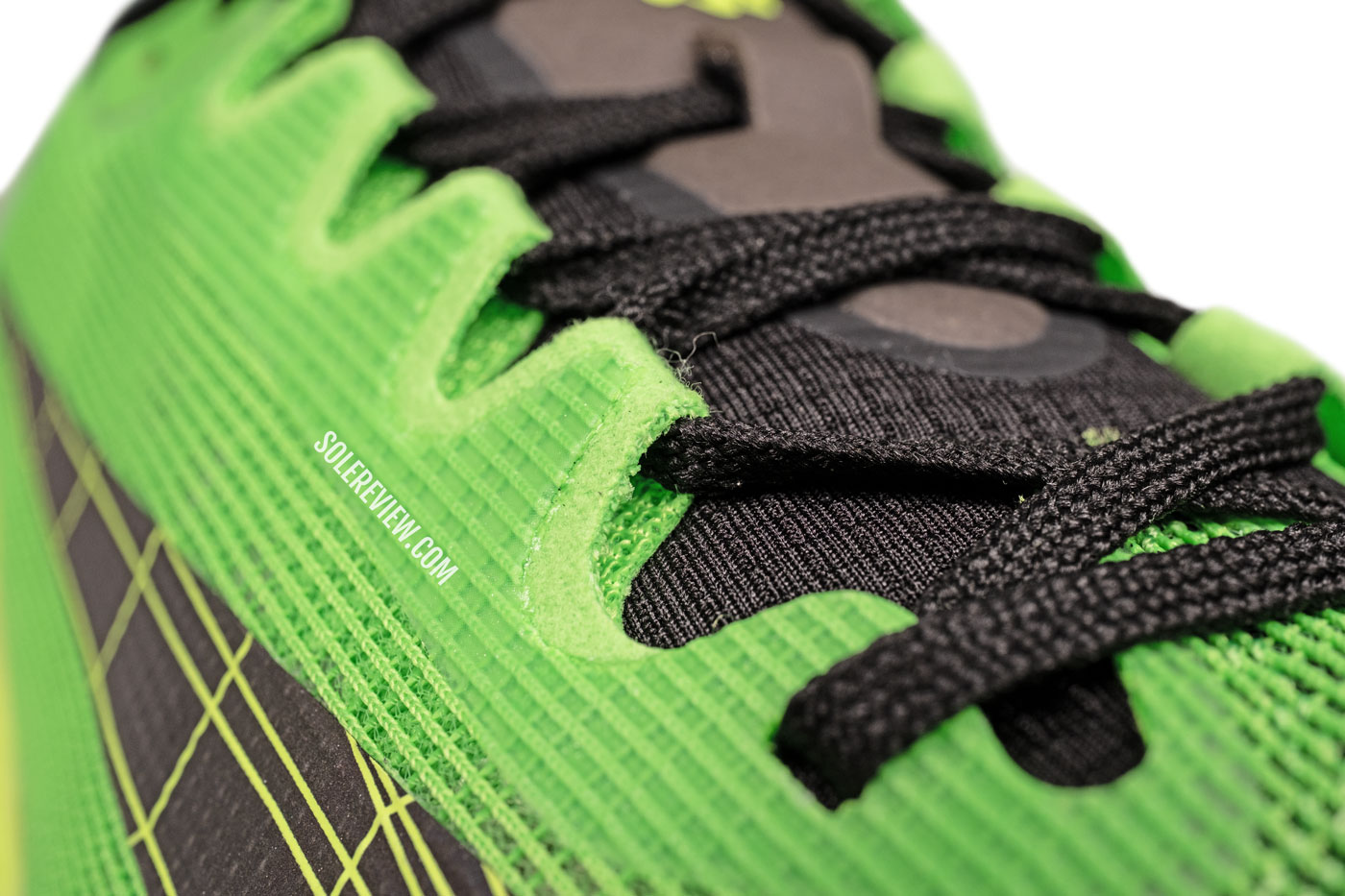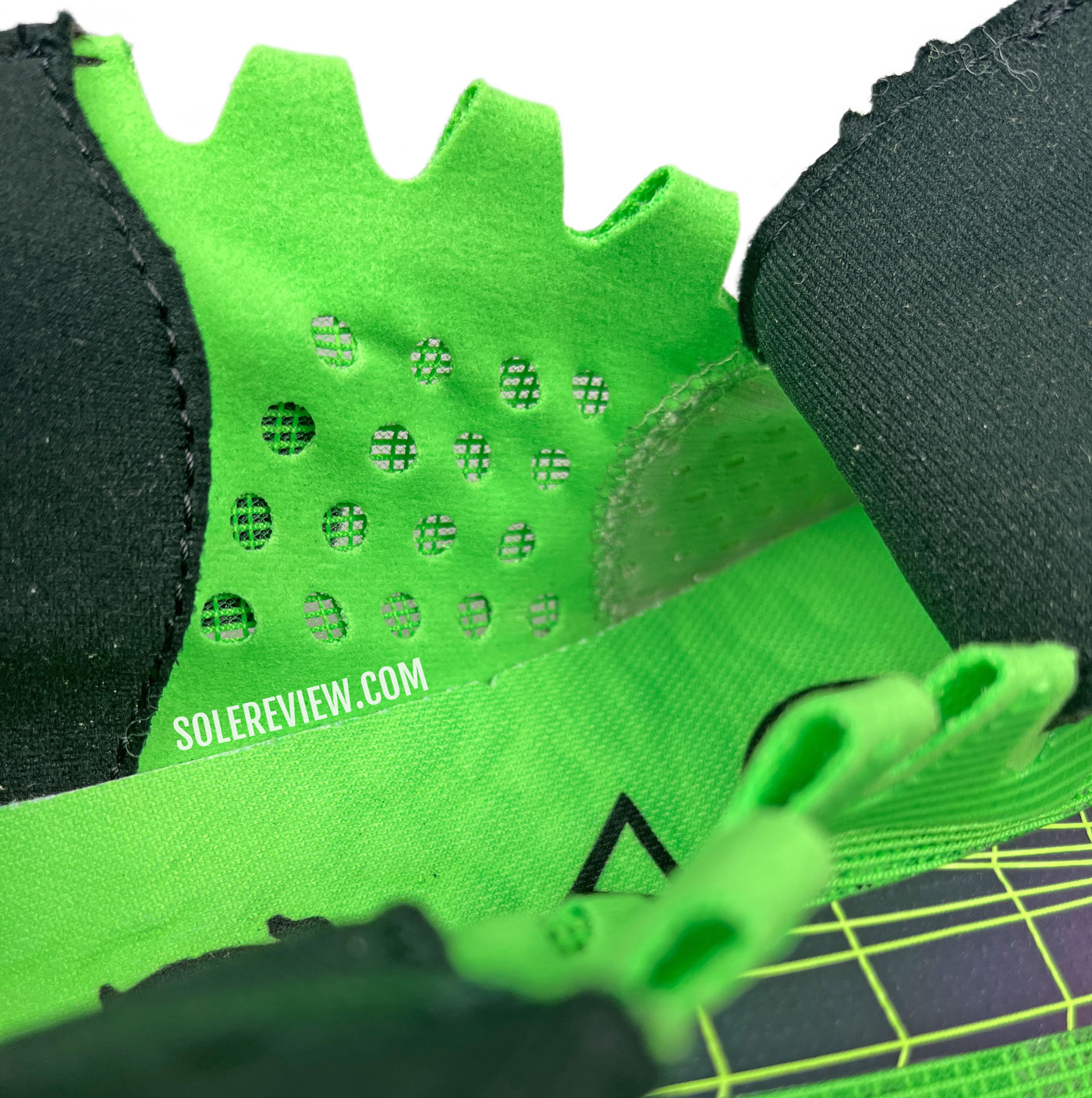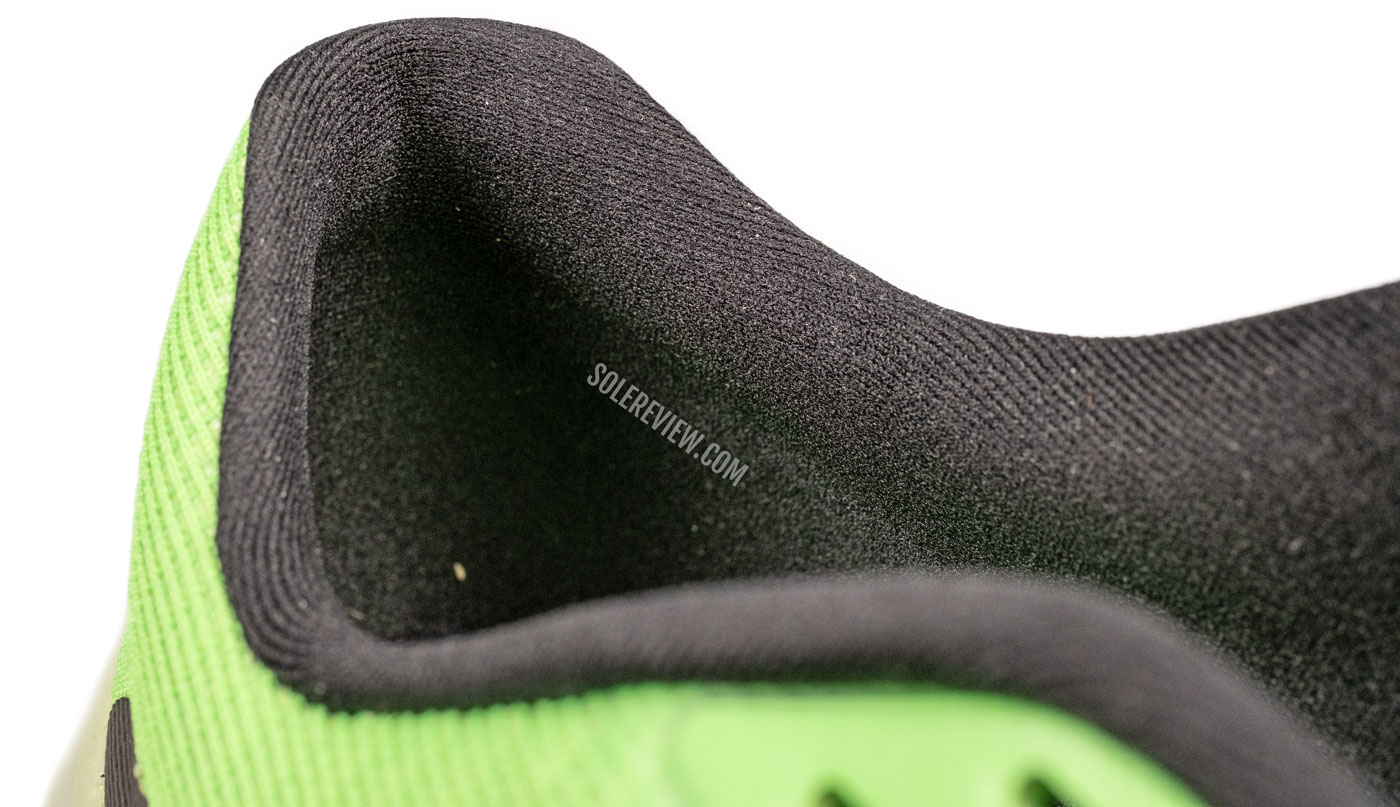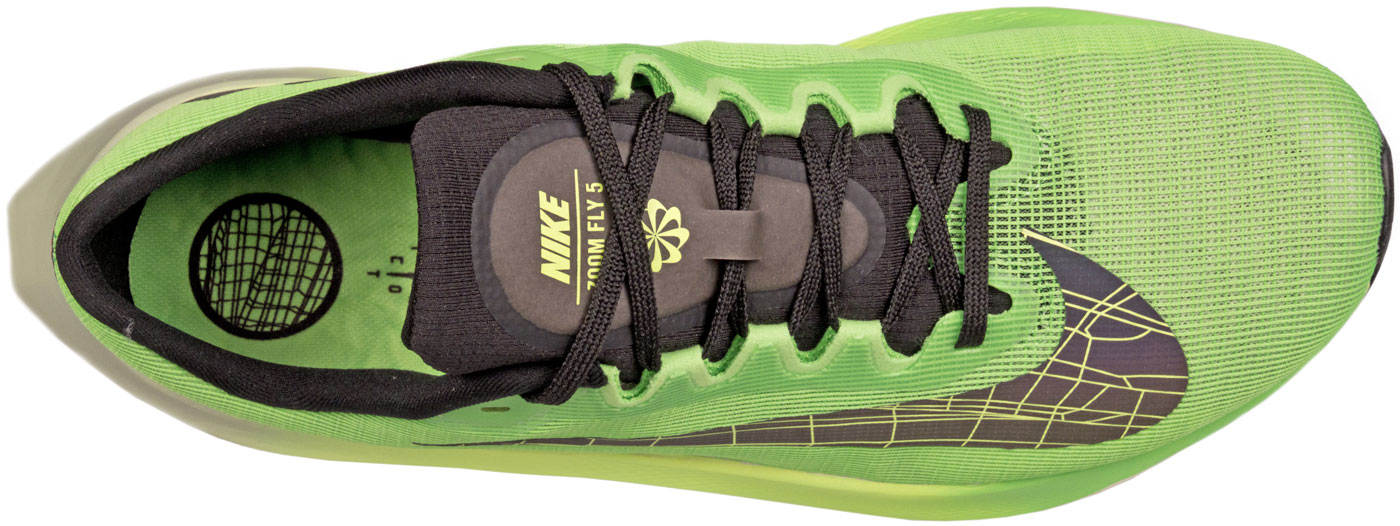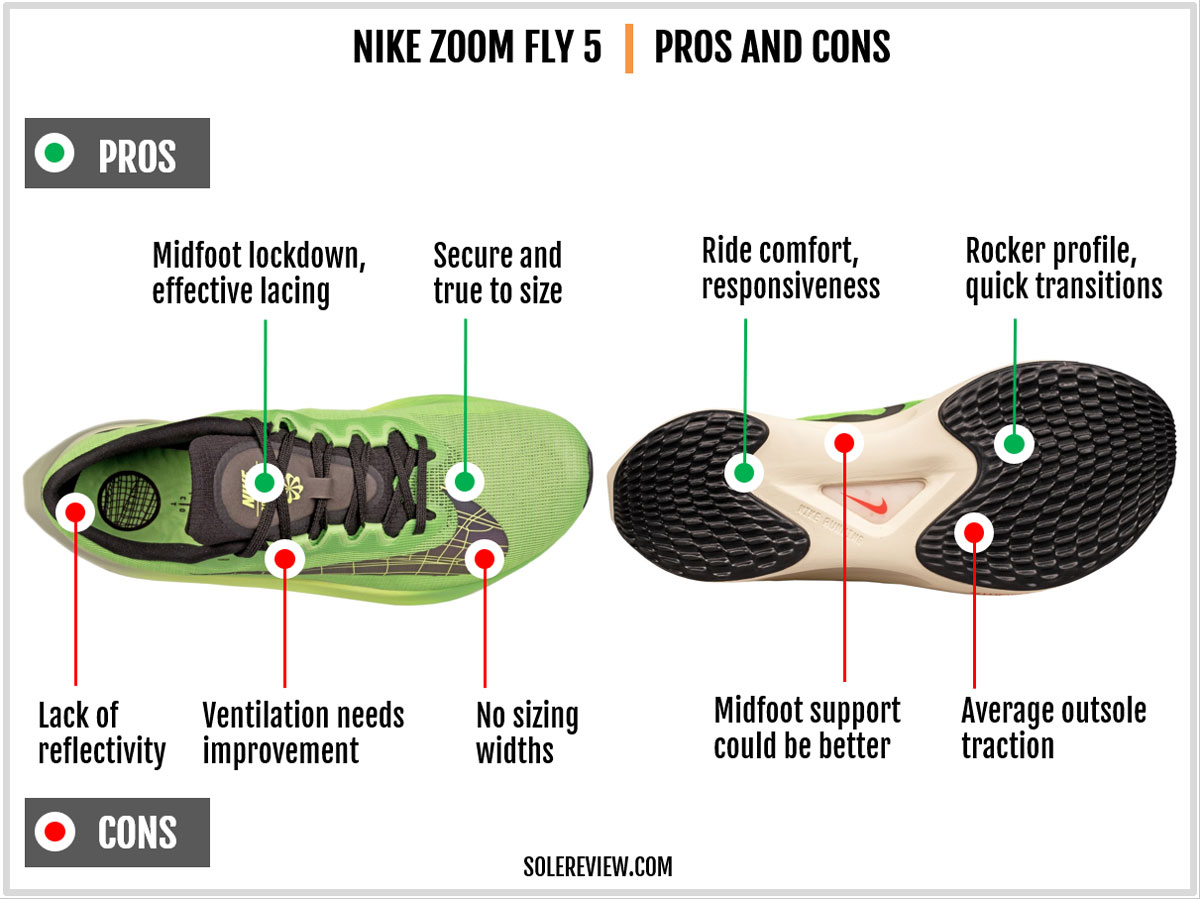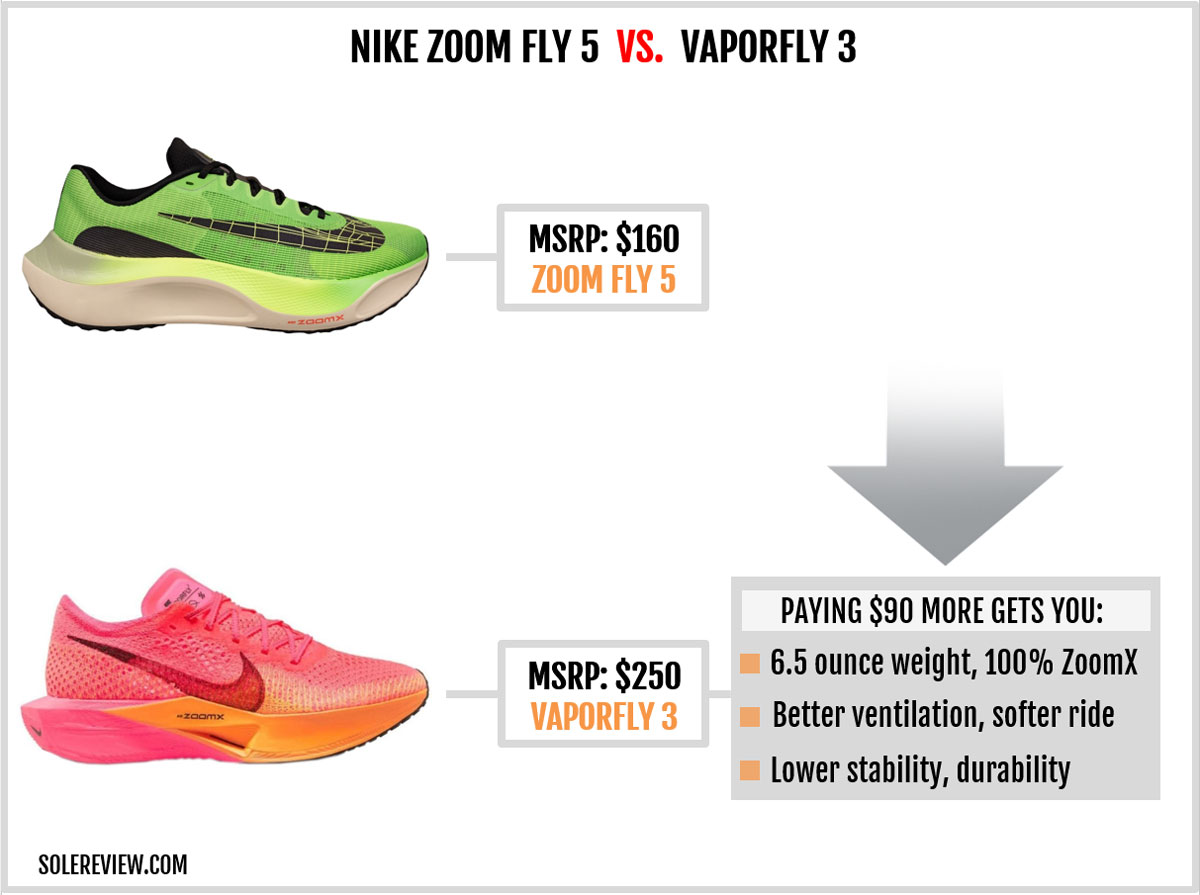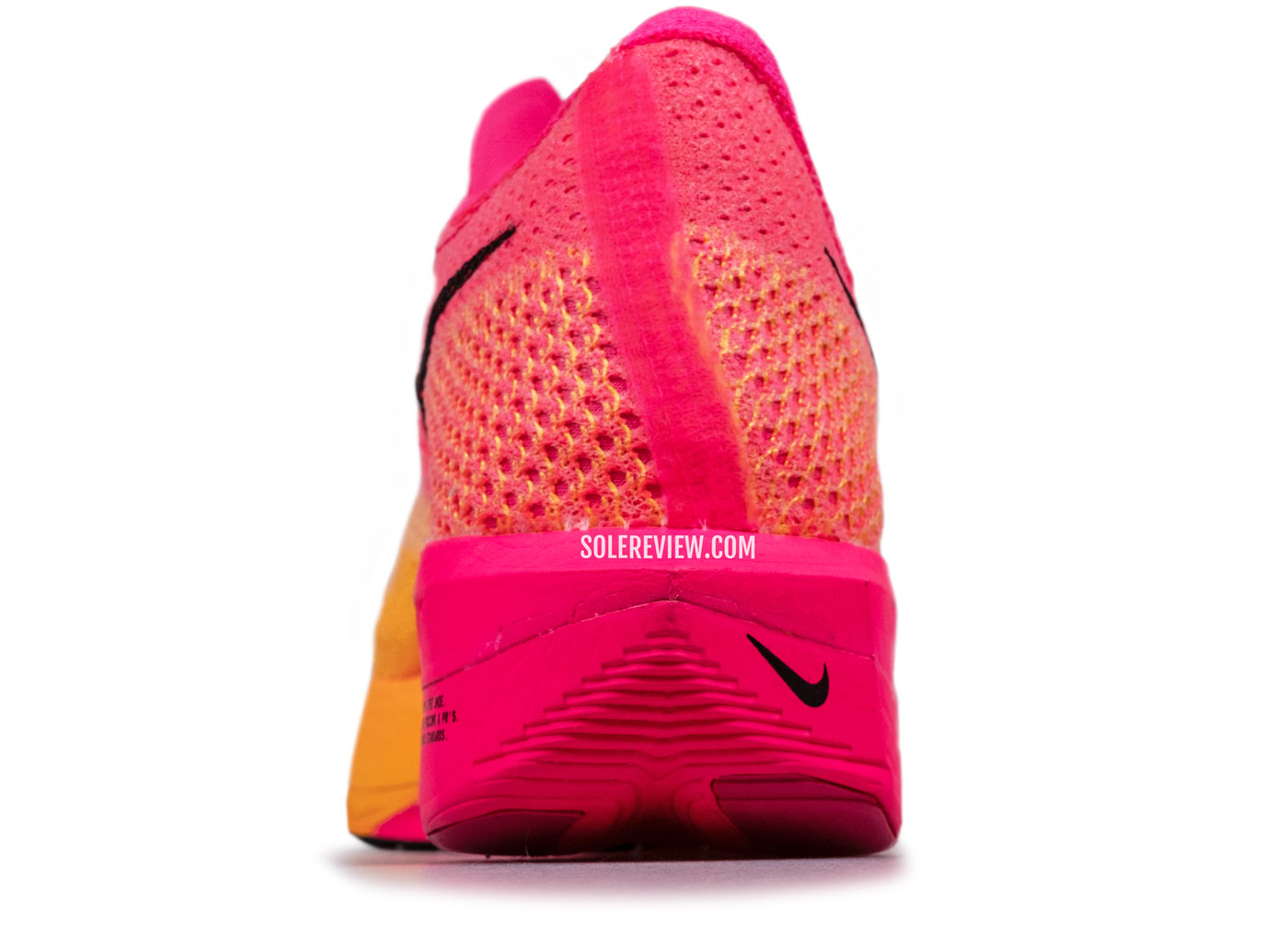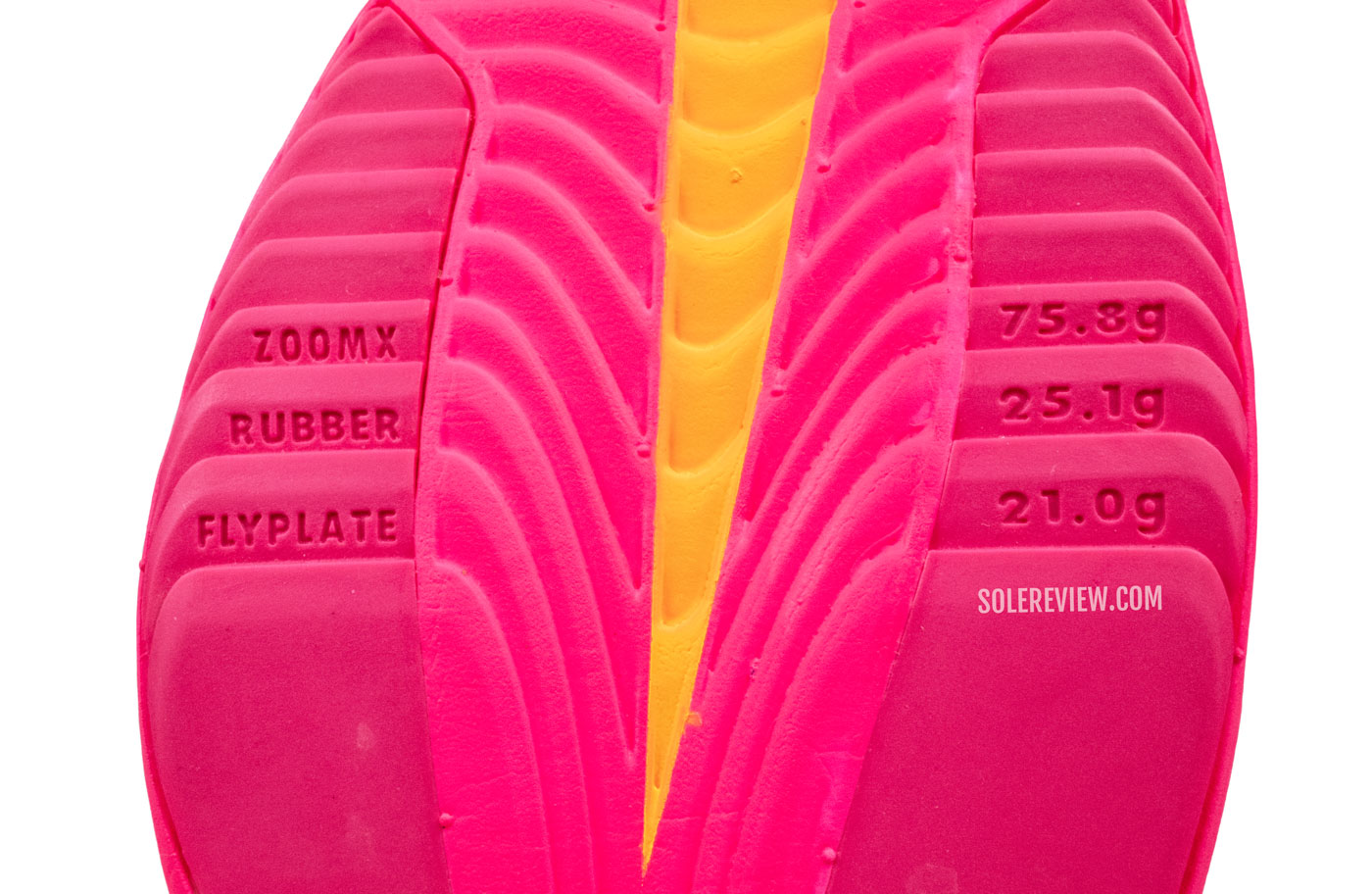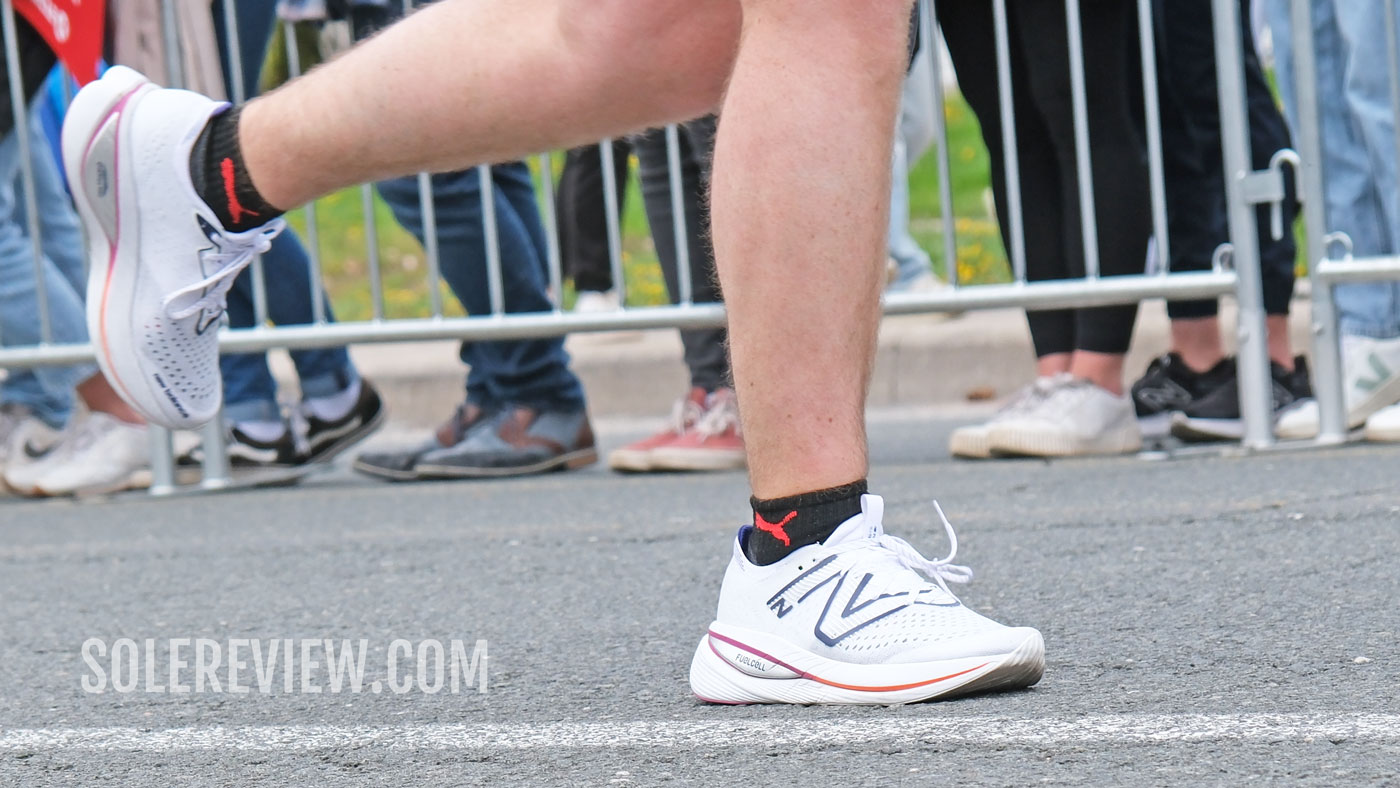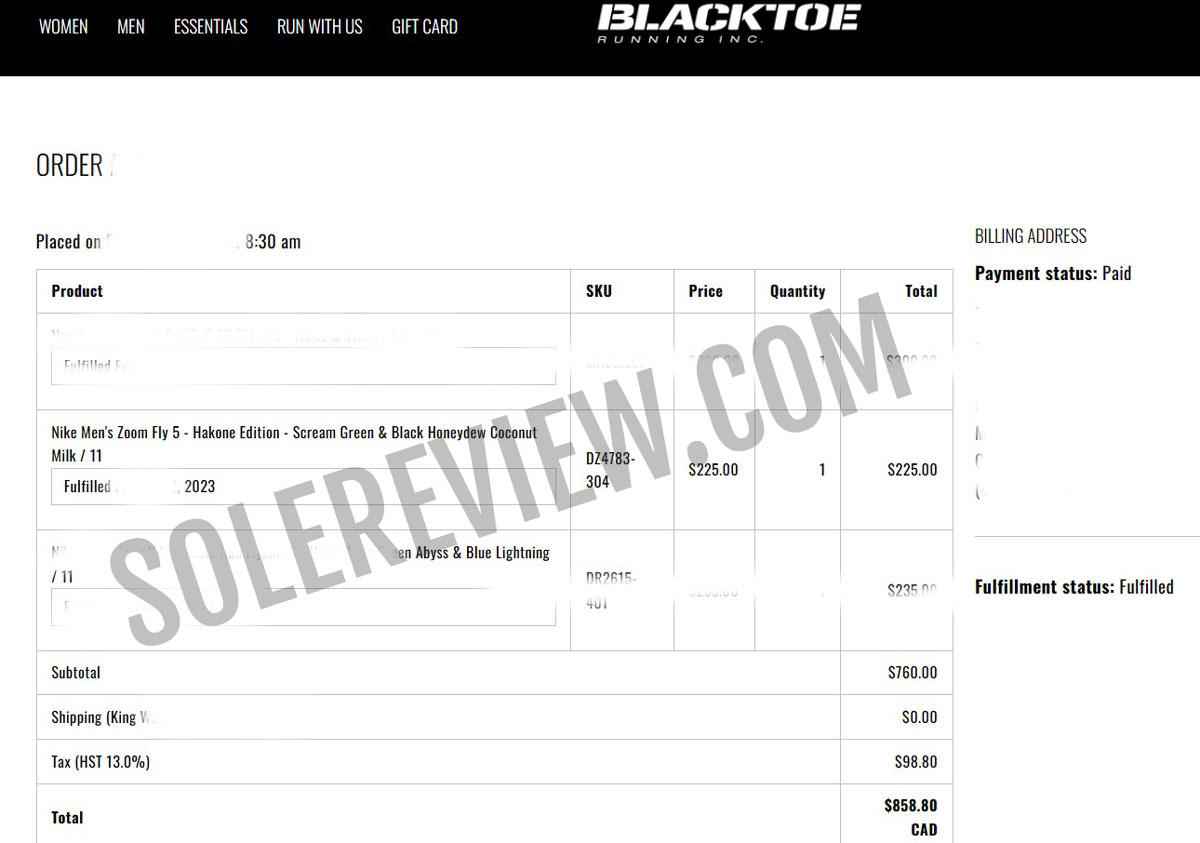
For this review, Solereview paid the full retail price for the Nike Zoom Fly 5. The amount is in Canadian Dollars.
In this review:
SUMMARY AND VERDICT
At first, we didn’t know what to make of the Zoom Fly 5. It heads in a different direction than the Zoom Fly 4, and also lacks a strong visual connection with the Vaporfly 3, as was the precedent.
Originally, the Zoom Fly was positioned as the lower-tier version of the Vaporfly. It was viewed as a more durable and stable version of the Vaporfly, but at a lower price.
Like the latter, the original Z-Fly had a full-length Carbon fiber plate, but without the soft and bouncy PEBA midsole. In its place was a React core that toned down the snappy feel of the plate. It’s similar to the Alphafly-Tempo Next% relationship.
So sure, when you try to view the Zoom Fly 5 as a plated racer that’s directly inspired by the VF, then it’s not going to make a lot of sense. You might even think that the Zoom Fly 5 suffers from an identity crisis.
On the other hand, the Zoom Fly 5 adds more value to Nike’s running shoe line-up than the Zoom Fly 4.
As a standalone shoe, the Z-Fly 5 has a clearer vision of what kind of shoe it wants to be. It’s an interesting shoe to say the least, and has many features that set it apart from the rest. It’s as important to Nike’s line-up as the Superblast is to Asics.
So who should buy this shoe?
Super shoes with a soft and springy PEBA midsole and Carbon plate are great, but the relatively lower level of stability, unforgiving nature, and sky-high prices may turn out to be potential deal-breakers. The Nike Vaporfly 3 also has long-term durability issues to deal with.
There’s no dearth of ride comfort in shoes like the Asics Nimbus. However, they lack the ‘pep’, ‘snap’, or any similar adjective that describes the spice in the ride quality that many runners have now come to expect.
At the same time, you want the speed-friendly character of the New Balance Rebel V3 or adidas Boston 12, but with Nimbus-level comfort.
This underserved territory is where the Nike Zoom Fly 5 makes its home. It’s the ideal long-distance running shoe, as well as an everyday trainer that doesn’t require a prescribed method or skill level to run in.
For example, we found the Zoom Fly 5 to be an excellent shoe when training for a marathon. Do you want to take it out on a 10-mile easy-pace run with a brief stride thrown in? No problem at all. It’s durable enough for everyday runs, and its performance doesn’t suffer if you land heel first or go slow.
THE NIKE ZOOM FLY 5 COMPARED WITH ZOOM FLY 4
Whereas the evolution of Nike Zoom Fly versions 1-4 was incremental, the Zoom Fly 5 puts a lot of distance between it and the Zoom Fly 4.
The Zoom Fly 4’s tighter midsole boundaries, stretchy snap-fit Flyknit tongue, and pod-like heel were directly derived from the Vaporfly. From afar, it was at times hard to tell the Zoom Fly 4 apart from the Vaporfly 2.
The V5 now only bears a faint resemblance to the V4. The Zoom Fly 5 has ‘decoupled’ visually and functionally from the Vaporfly, and has greater freedom in deciding what kind of shoe it wants to be.
It leaves behind the slim midsole form factor, as well as the minimal racer-like upper.
The new upper has a regular trainer-like tongue and heel design, as well as a broad and taller toe box. The Zoom Fly 4’s toe box was shallow; the Zoom Fly 5’s toe box is not. The V5 is noticeably less tighter than the V4 in the forefoot and midfoot.
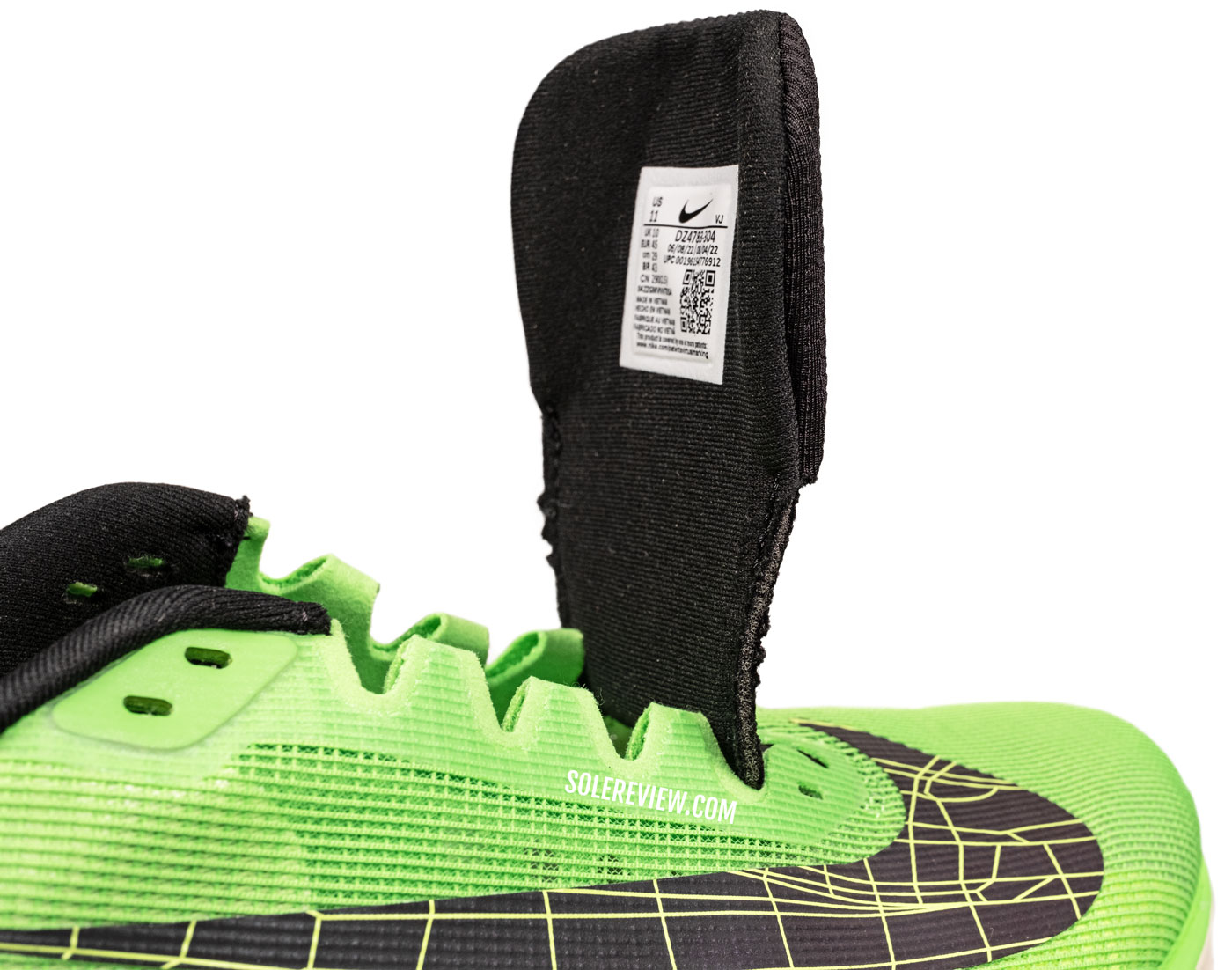
Yes, the tongue isn’t tethered to a sleeve. The elastic Flyknit bootie from the previous model is gone as well.
The ZF5 drops the inner sleeve as well as the stretchy Flyknit tongue from the previous version. The levels of ventilation stay the same more or less. Even though the Fly 5 doesn’t have a sleeve, the mesh is reinforced with another layer of backing.
The forefoot fit is as secure as before; there’s an inner strap as well as synthetic underlays on either side of the forefoot.
The single-density React midsole has been replaced with a dual-density midsole. Inside the soft EVA-blend foam casing is a ZoomX foam core and Carbon plate. The forefoot and midsole get a wider contact surface as well as greater outsole coverage.
On the road, the Zoom Fly 5’s deeper and softer cushioning is easier on the foot than the Zoom Fly 4. While the new midsole retains the rocker forefoot and muted snap of the plate, the redesigned Zoom Fly feels closer to a regular neutral trainer than the V4. This also means that the Zoom Fly 5 doesn’t feel as ‘quick’ as the Zoom Fly 4.
Interestingly, the redesigned Zoom Fly 5 no longer has a removable insole (as the ZF 4 did), but a glued-on kind.
Despite the bulkier visual profile, the Zoom Fly 5 weighs nearly the same (slightly lighter) as the Zoom Fly 4.
THE MIDSOLE DESIGN AND RIDE EXPERIENCE
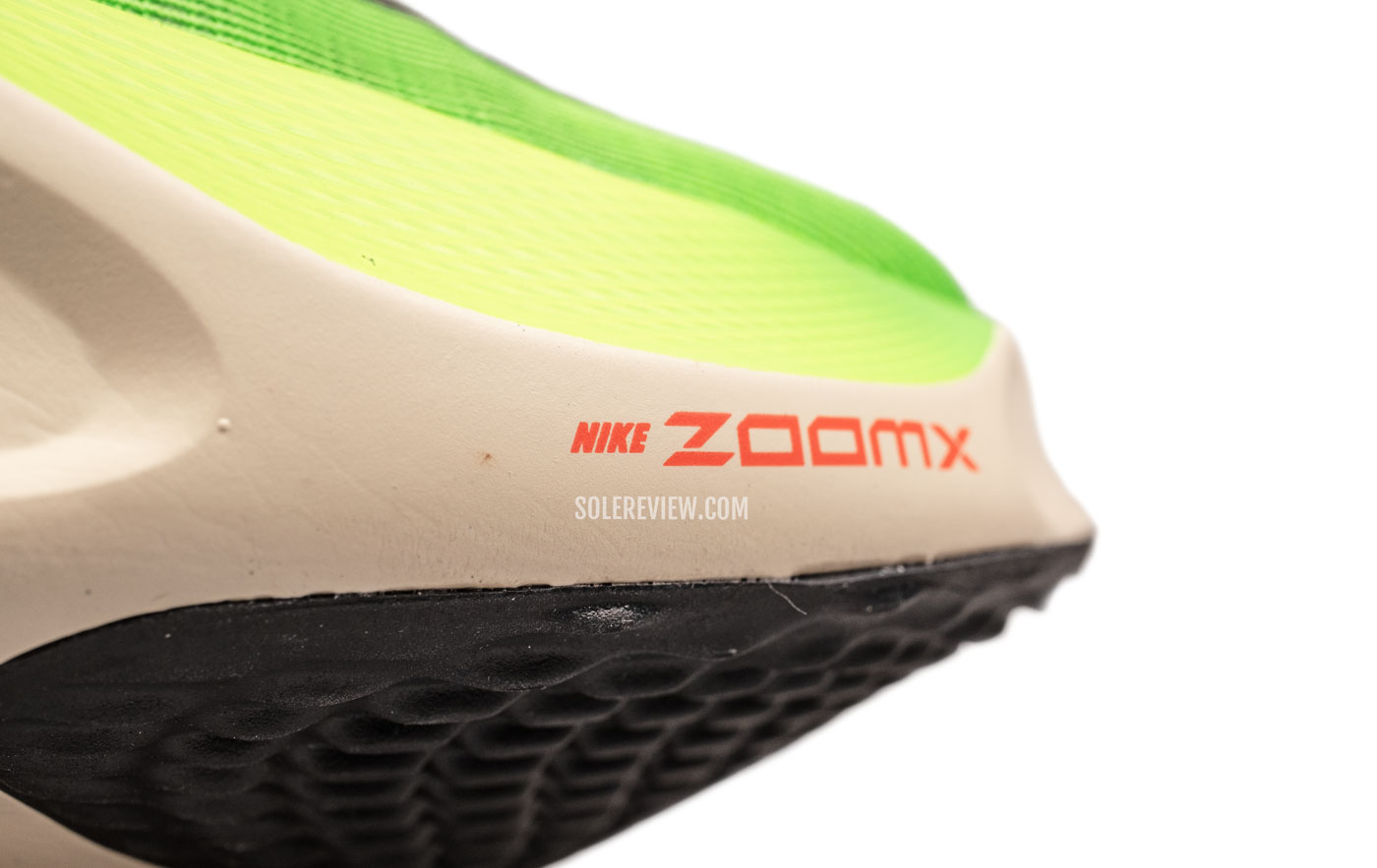
The ZoomX foam is inside, hidden away from plain sight. The outer midsole is made from an EVA foam blend.
Except for the Carbon plate and rocker midsole profile, everything around it is new. The Carbon plate is embedded inside a soft ZoomX foam core, and over it is an EVA-blend foam.
What you should also know is that the outer midsole is soft. It’s softer than the React midsole we saw on the outgoing model. The information about the stack height varies depending on the source, but the consensus is that the Zoom Fly 5 has a heel height of 41 mm and a forefoot thickness of 33 mm.
If you do the maths, that’s an 8-mm heel-to-toe offset for you. Not too high, nor too low – just enough to keep everyone happy.
The tiny triangular outsole window gives us a glimpse of the ZoomX core. It appears that Nike uses the same type of fused-scrap ZoomX that’s on the Pegasus Turbo.
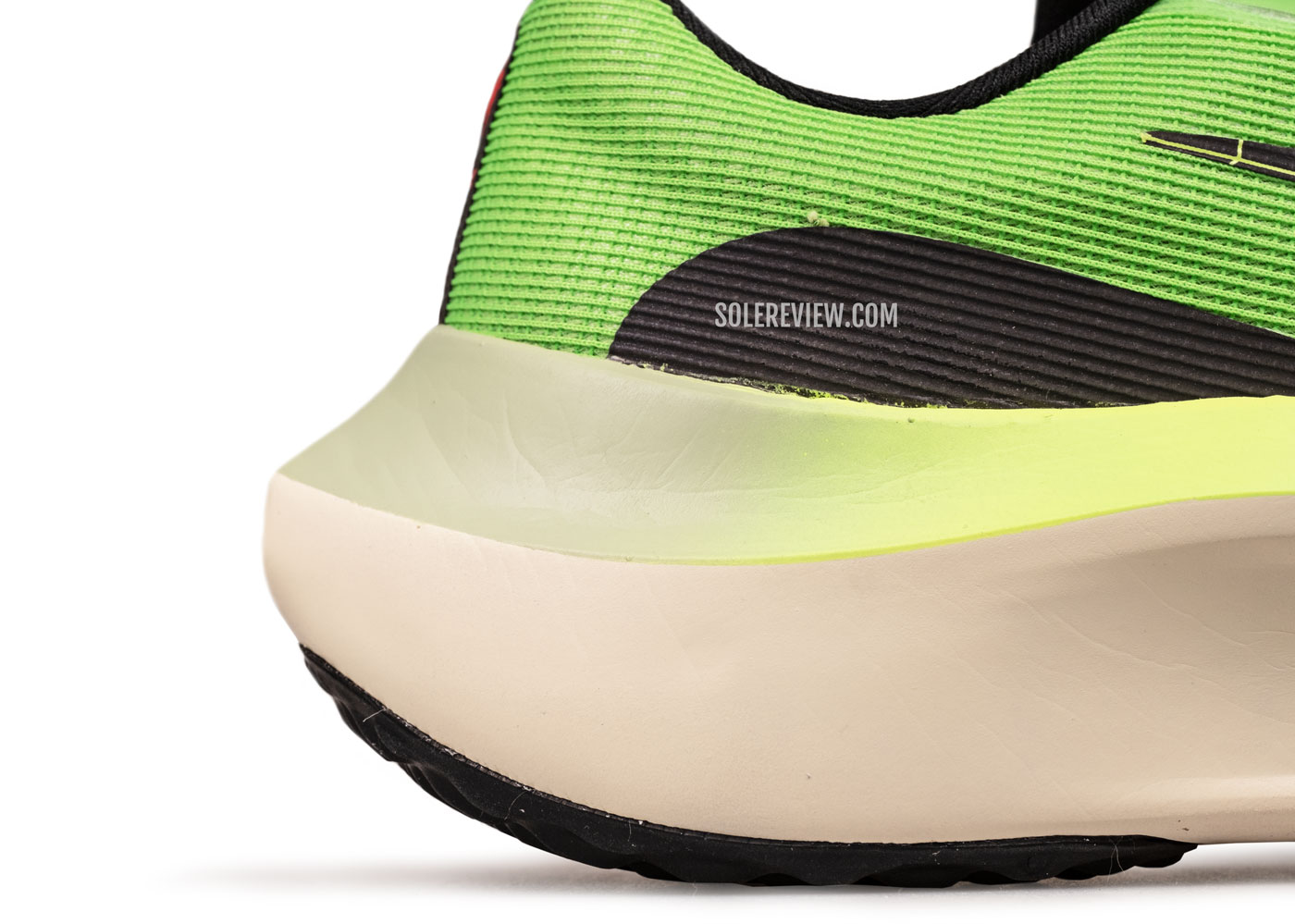
On the Zoom Fly 5, the foot sits lower inside the midsole. That wasn’t the case with the Zoom Fly 4 – there was a distinct lack of ‘cupping’ around the heel.
The midsole forms a cup around the heel, so the foot feels securely seated inside. That wasn’t the case with the Zoom Fly 4, where the midsole didn’t have raised sidewalls – the foot sat over the midsole, rather than in it. The pasted insole of the Zoom Fly 5 also adds to the lower-to-the-ground feel.
This time, the Zoom Fly 5 opts for a non-removable insole that also happens to be thinner than the one used on the last version. That way, the foot builds a closer connection with the midsole.
On the road, the three components work together in sync. The EVA midsole and ZoomX core combine their properties to deliver a cohesive cushioning experience. The cushioning has a comfortable depth to it as well as the responsiveness that’s expected of a ZoomX midsole.
As for the Carbon plate, it’s fairly inconspicuous. It works in the background without attracting attention. Whereas a softer midsole made of 100% PEBA foam gives away the presence of a plate, here the plate feels like an integral part of the cushioning system.
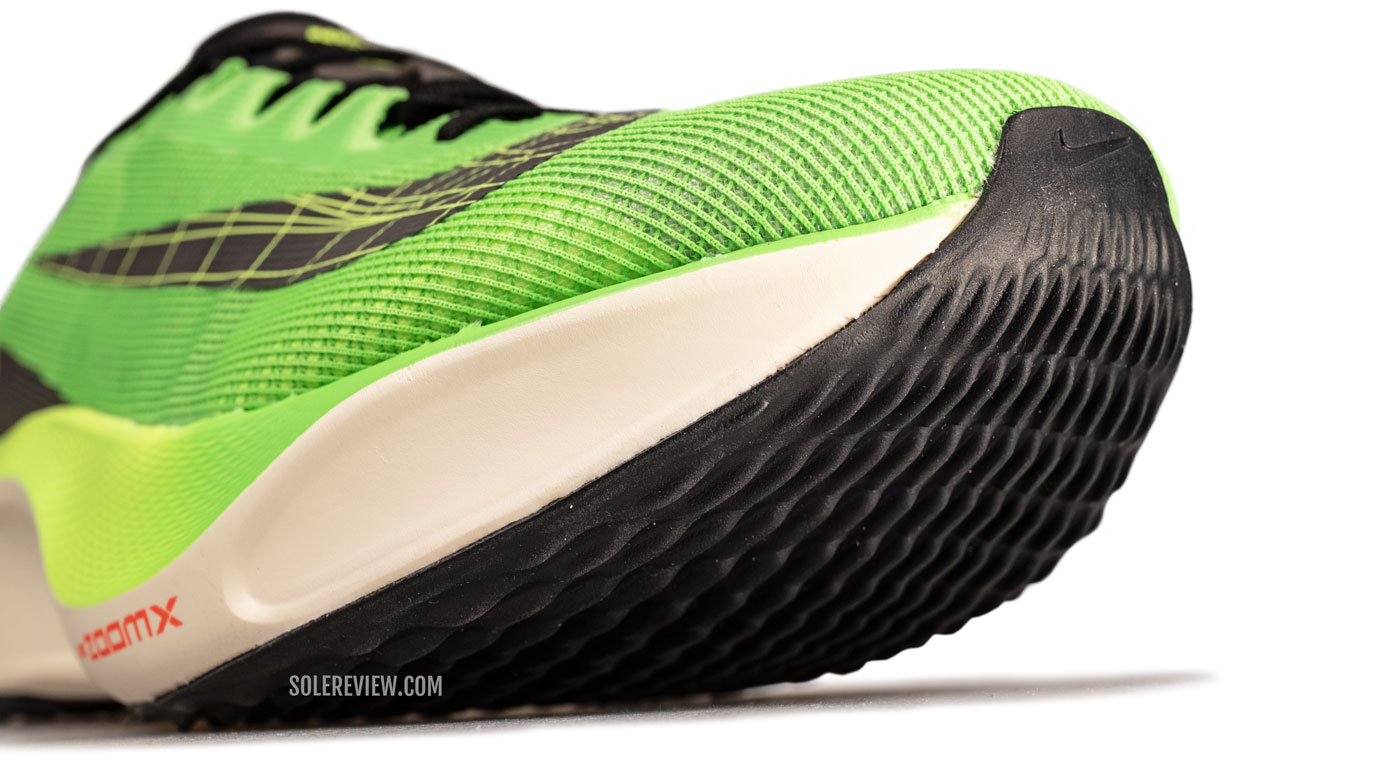
The Carbon plate gives the midsole its forward curvature and toe spring. This rocker shape helps with forward transitions.
Inside the Zoom Fly, the Carbon plate accomplishes two things.
It defines the rocker shape of the forefoot, and that allows the foot to smoothly roll forward despite the tallness of the midsole. The forefoot is deeply cushioned, but flexible is not its strong suit.
Secondly, by being suspended within the ZoomX foam under the heel, it adds the muted spring-back that would otherwise be absent on an all-foam midsole. For example, if the Asics Nimbus had a Carbon plate, it would behave similarly to the Zoom Fly.
This is what makes the Zoom Fly 5 versatile enough for strides and tempo workouts. While not a speed shoe, the Z-Fly performs efficiently at 4:00 min/km (6:30 min/mile) paces. The transitions feel smooth and connected without rough patches.
You can try to squeeze 3:30 min/km (5:30 min/mile) speeds out of the shoe, but it’s not the best choice of footwear for that – the midsole is simply too tall and soft.
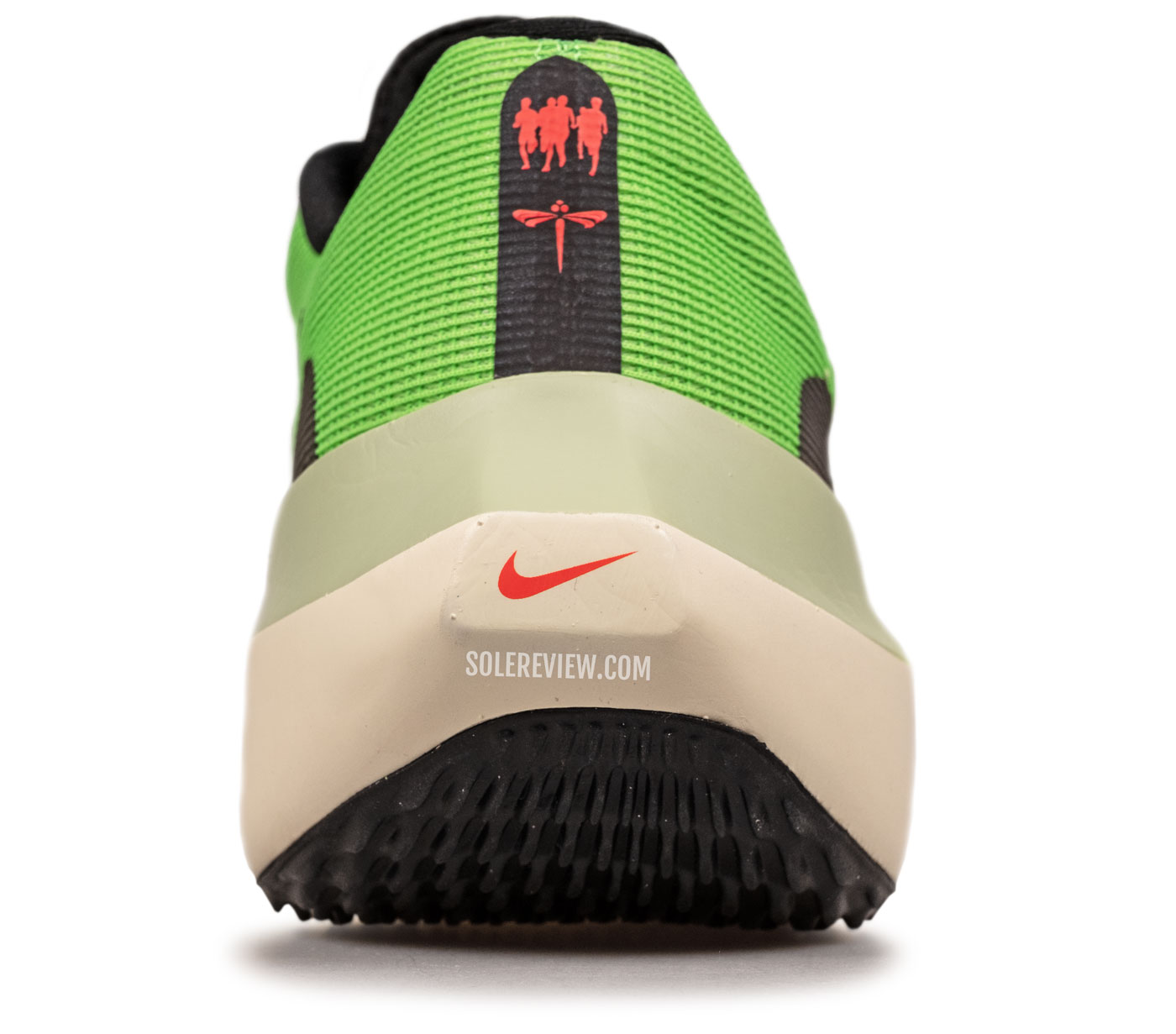
The midsole is wider across the heel and forefoot. This, when combined with the raised midsole edges, gives the Zoom Fly 5 a higher level of stability.
The Zoom Fly 5 is also great for long and slow runs. The wide midsole does a good job of distributing the cushioning, so the ride comfort favors all foot-strikes and running speeds. It also offers superior stability over plated marathon racers like the Nike Vaporfly and Saucony Endorphin Pro.
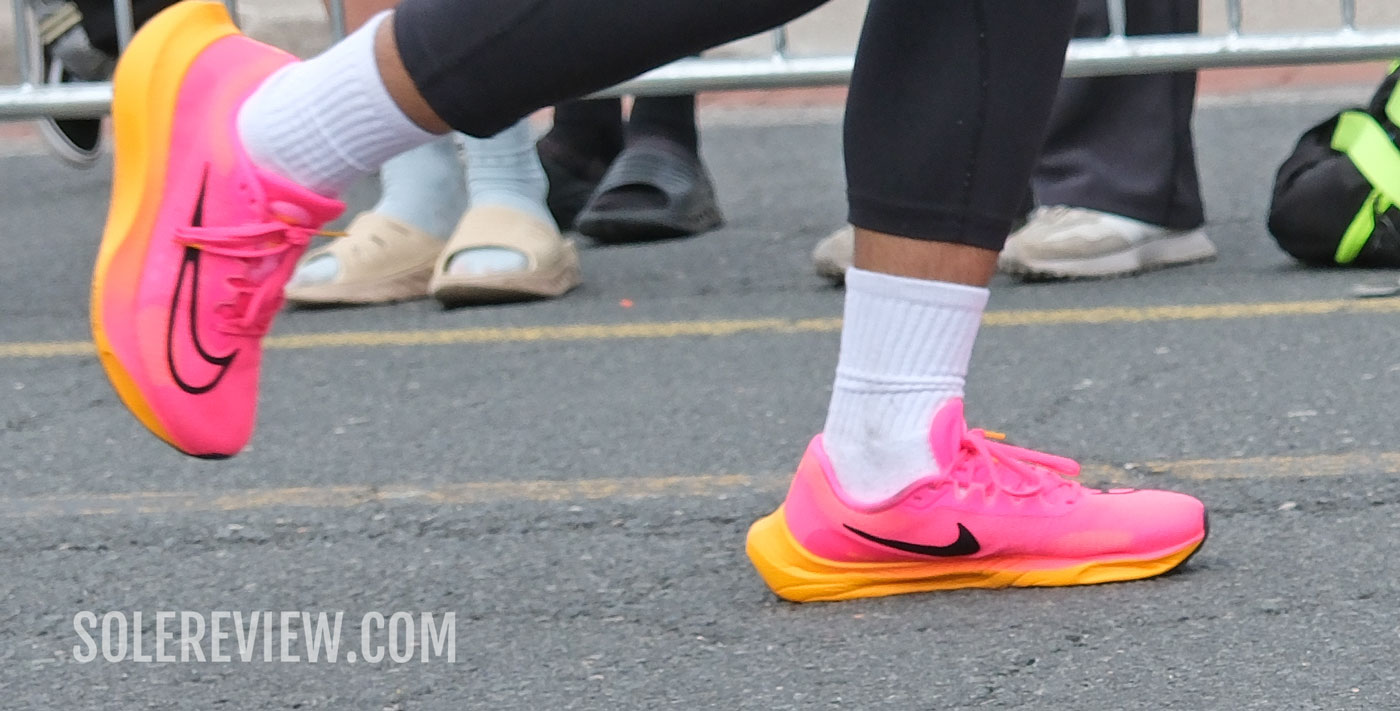
The midsole tends to collapse when loaded heavily on the arch side. The midsole lacks structural support in that area.
The cupping effect of the rearfoot midsole and wider base brings the overall stability level close to a standard trainer.
There’s a caveat, and that applies to heavy runners who tend to roll inwards.
Under heavy loads, the Zoom Fly 5’s midsole undergoes noticeable compression. The picture above demonstrates that.
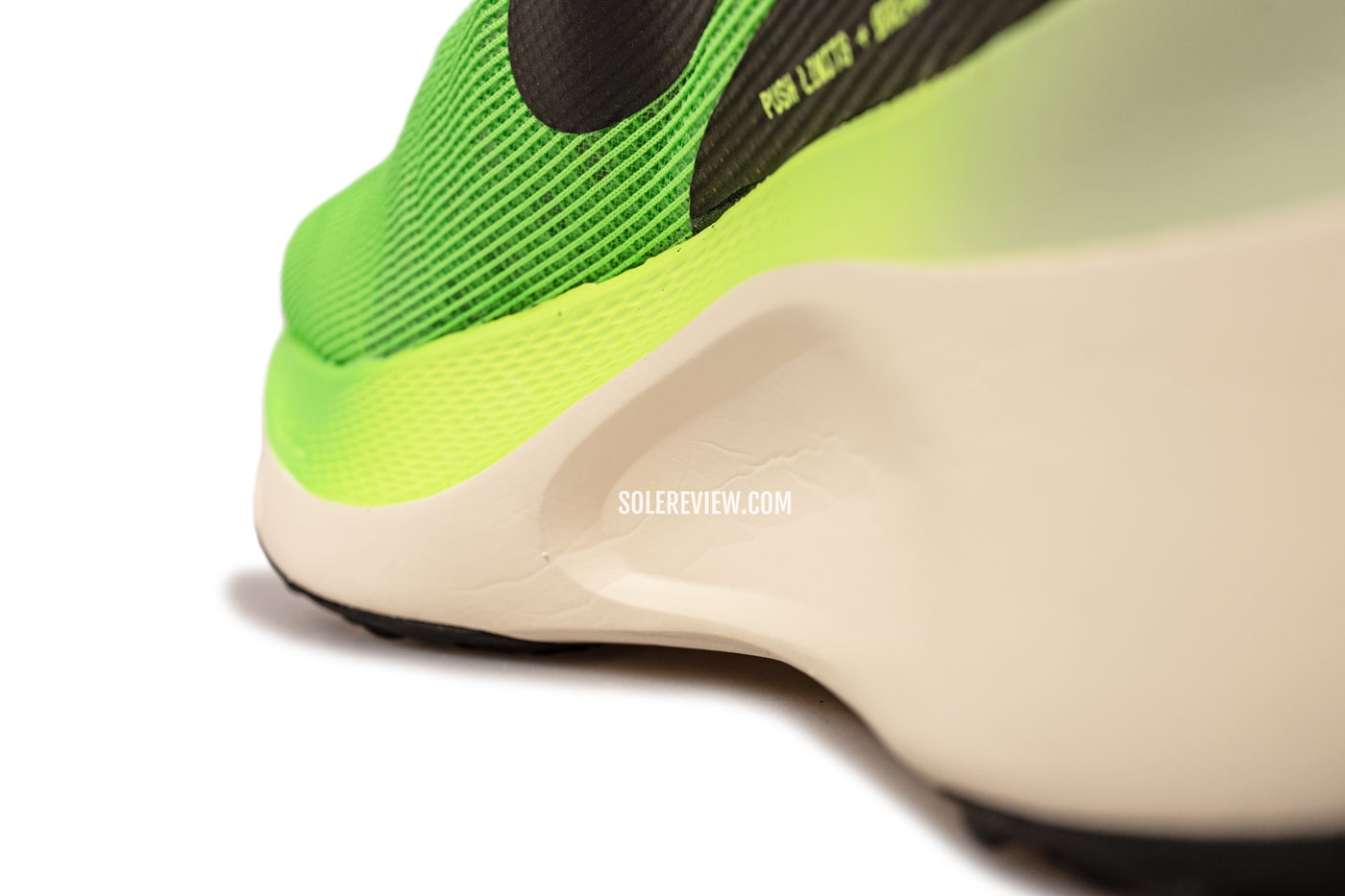
If the midsole foam was firmer, the scoop would have helped with the stability. On a soft midsole, it has an opposite effect.
The scooped design of the midsole is the culprit – Nike should have filled it up like the Brooks Glycerin or Hyperion Max to achieve a better outcome.
Rearfoot strikers will find the Zoom Fly 5 a better fit for them than the V4. Not only is the midsole wider under the heel, but its raised sidewalls also form a cup. When compared to the Zoom Fly 4, the foot is seated lower in the midsole than on top of it.
The heel has more outsole rubber than any of the past Z-Fly versions, and the midsole is wider under the heel. Midfoot and forefoot strikers will find a cushioned and planted base to land on, as well as decent, if not great, outsole traction.
RECOMMENDED ROTATION
With the Zoom Fly’s newfound character, just a two-shoe Nike rotation will suffice for most use cases. Run in the Nike Streakfly for shorter (5K and under) speed runs and races, and do the rest of your runs in the Z-Fly – be it marathons, daily runs, or long-distance training.
We also like the adidas Adios 8 and Adizero SL for short races. They are more durable than the Streakfly and offer better outsole traction.
If you have the budget for a third shoe, spend it on either the Nike Vaporfly 3 or Saucony Endorphin Pro 3. Those two will give you the unadulterated super-shoe experience, PEBA midsole and all.
IS THE NIKE ZOOM FLY 5 DURABLE?
Shoe for shoe, the Zoom Fly 5 is as durable as the last version. All the parts that are needed to make it happen are there; be it the outsole rubber coverage and durable EVA foam midsole casing.
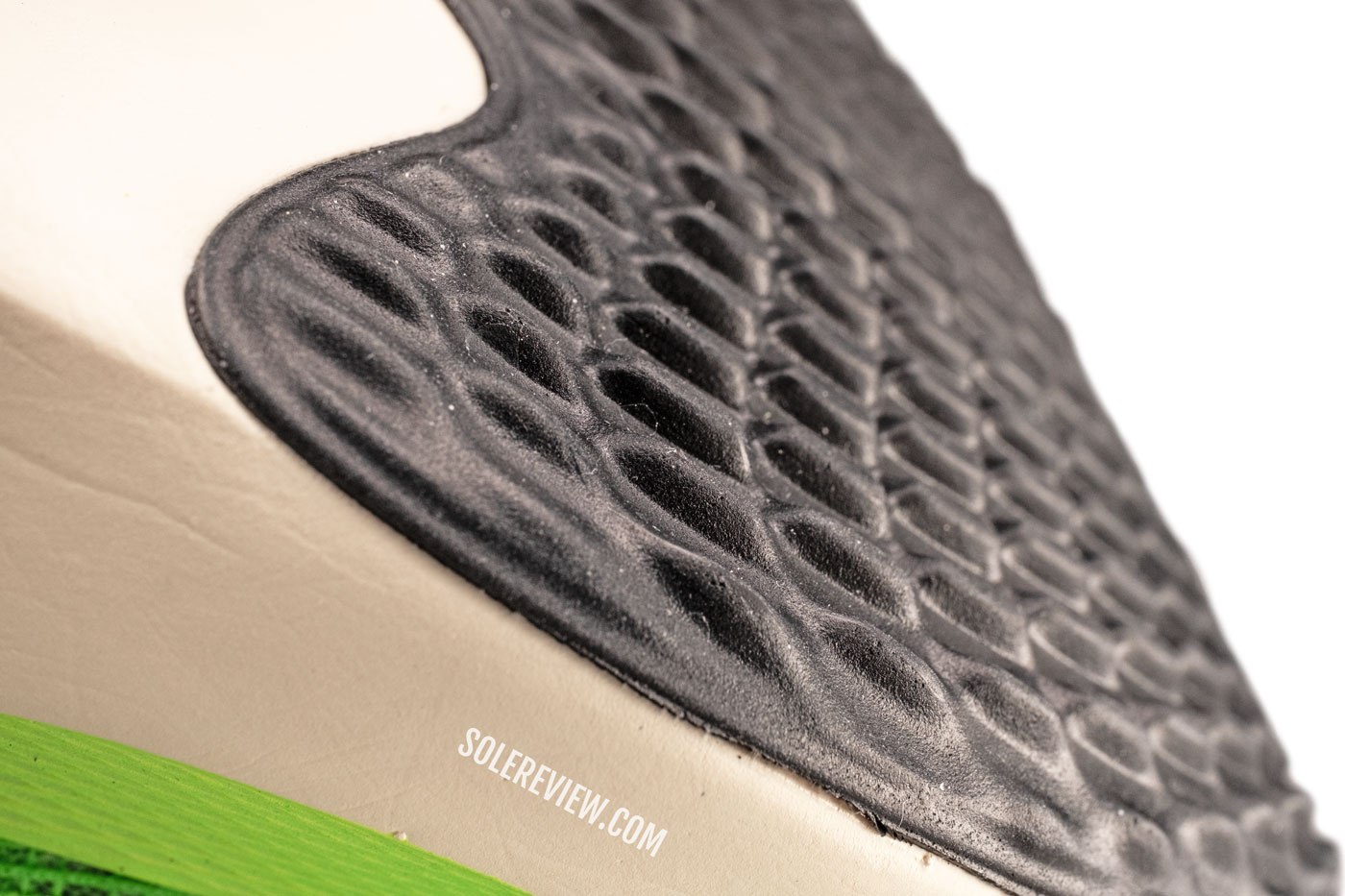
The outsole lugs are thin and soft, so wear and tear will happen on contact areas. This will occur fairly early in the ownership period.
Creasing on the midsole will happen, but it’s not going to affect the performance of the shoe. The outsole rubber lugs tend to wear down near the point of footstrike, but the rate of wear slows down after the initial phase.
The double-layered upper is reinforced with an internal midfoot strap and underlays over the inner and outer toe.
THE UPPER DESIGN AND FIT
The Nike Zoom Fly 5 has a true-to-size fit that conforms over the foot. The toe box has a broad profile, an expected outcome of an internal toe bumper. The rest of the shoe is snug, be it the forefoot, midfoot, or heel.
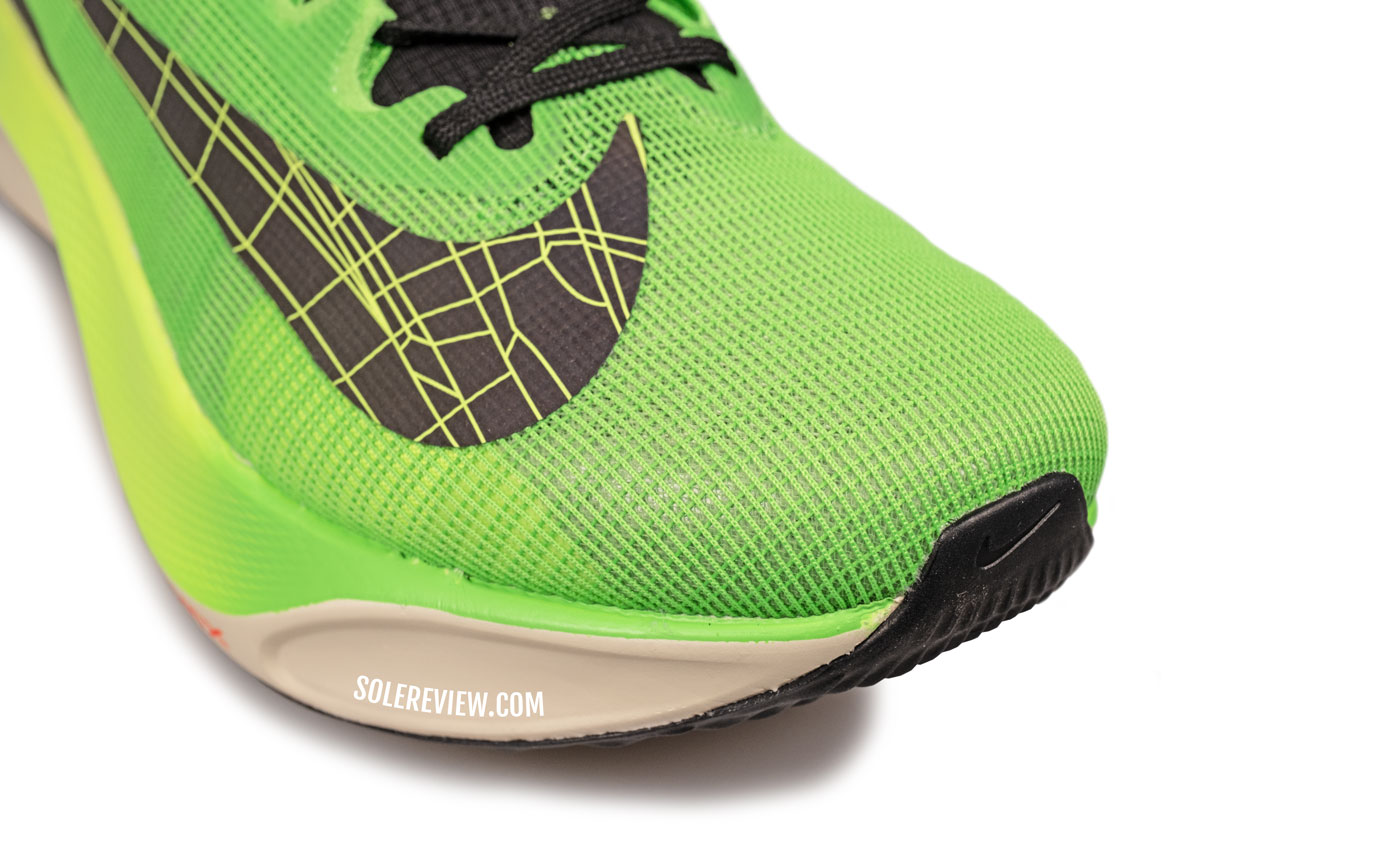
There’s a decent amount of space inside the toe box. However, the forefoot is tighter than the average trainer.
The forefoot has four layers of fabric – the outer mesh, toe bumper, perforated lining, and a separate panel of fabric sandwiched in between.
However, the inner stiffener is limited to the toe box area and does not extend to the forefoot.
The speed lace loops are connected to a midfoot panel (perforated, again) that makes adjusting the fit an easy task. Lacing is quick and effective because it is directly connected to the upper. This perforated strap has a smoother fit than the thinly-spliced part on the Zoom Fly 4.
It’s worth mentioning that while the Zoom Fly 5’s upper is very secure, it’s not as form-fitting as the Zoom Fly 4.
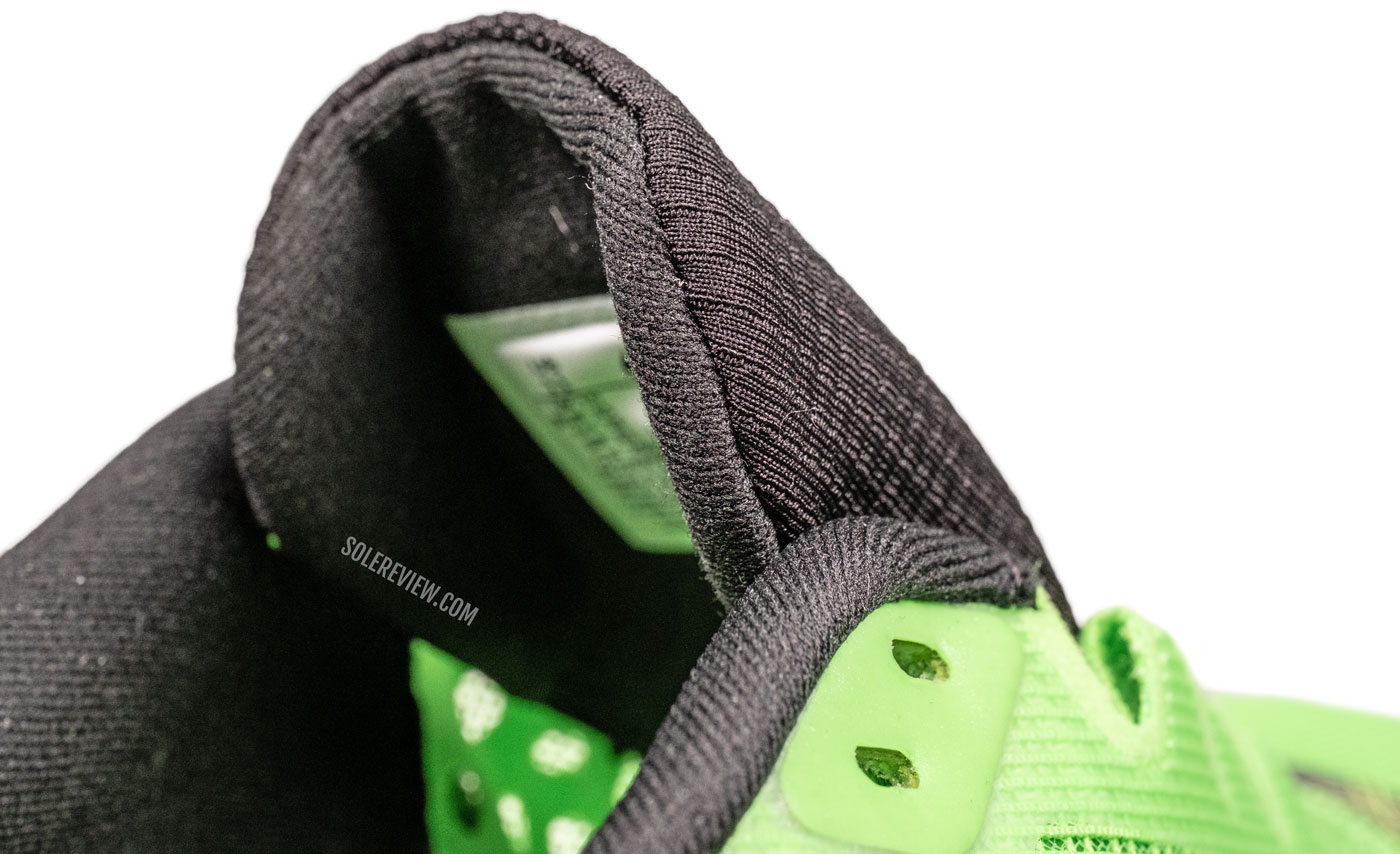
The Z-Fly 5 swaps the Flyknit bootie of the Z-Fly 4 with a traditional tongue sans a sleeve. It does a better job of absorbing the lacing pressure than the V4.
Not only did the previous model have a fully inner sleeve, but the tongue and opening were constructed using an elastic Flyknit mesh. The Zoom Fly 5 uses a padded tongue without a sleeve, and it does a better job of absorbing the lacing pressure. On the flip side, the tongue slides a bit to the side.
Despite the low levels of padding, the heel grips surprisingly well.
We fully anticipated some kind of slippage when we saw the design, but our fears were unfounded. The heel depth and contoured design lock the foot in place. The heel fit may not feel as secure as the pod-assisted design from Zoom Fly 4, but there’s very little cause for concern.
The ventilation has never been the Zoom Fly’s Forte.
The thick mesh doesn’t let the air pass as freely as the Vaporfly 3. Having said that, the inner layers of mesh have large perforations, so the shoe doesn’t run hot. Most of our test runs were conducted on 25° C/77° F days and the upper did not trap heat.
Our ‘MayFly’ (Hakone) variant had ultra-reflective swooshes, but the standard variant lacks high-visibility elements.
ORTHOTIC COMPATIBILITY
The Nike Zoom Fly 5 has a non-removable footbed, so it’s not compatible with aftermarket Orthotics. Exceptions apply – for example, if your aftermarket insole is ultra-thin, then you can try to see if it fits.
This is an important thing to know, because the Zoom Fly 4 had a replaceable insole. Understandably, some runners will be upset as they can no longer use the same insole with the Zoom Fly 5.
PROS AND CONS
With the extensive updates, the Zoom Fly 5 is now uniquely positioned as a shoe that offers the ride signature of a plated midsole as well as everyday versatility.
The higher level of stability and cushioning widens the Z-Fly’s appeal by making it more forgiving to a wide range of footstrike patterns and running speeds. It’s heavier than many plated racers, and in lieu, it offers a higher level of versatility and durability.
The true-to-size upper excels at locking the foot down. However, additional widths would help broad-footed runners. The outsole traction could also do with some tune-up.
COMPARISON: THE NIKE ZOOM FLY 5 VERSUS NIKE VAPORFLY 3
Summing up the Zoom Fly 5 and Vaporfly 3 is easy, and the process of doing so also explains the difference between the two.
The Vaporfly 3 is a hyper-light marathon racer that’s great for speed runs, but sacrifices some stability and durability to achieve that.
On one hand, the Zoom Fly 5 is a versatile everyday trainer and high-mileage cruiser. It’s a lot more stable, durable, and 3 ounces heavier than the Vaporfly.
The wider and (more) supportive midsole makes it more forgiving than the VF 3. It’s equally good for easy runs as well as 4:00 min/km (6:30 min/mile) speeds. Be it heel or forefoot strikers, the Zoom Fly serves all.
In comparison, the Vaporfly 3 works best when a higher running speed is paired with a forefoot/midfoot strike.
On warmer days, the Vaporfly 3’s ventilation is far superior to the Zoom Fly 5. The VF 3 uses a single mesh with large pores all over; this lets the air circulate freely.
SHOES COMPARABLE TO THE NIKE ZOOM FLY 5
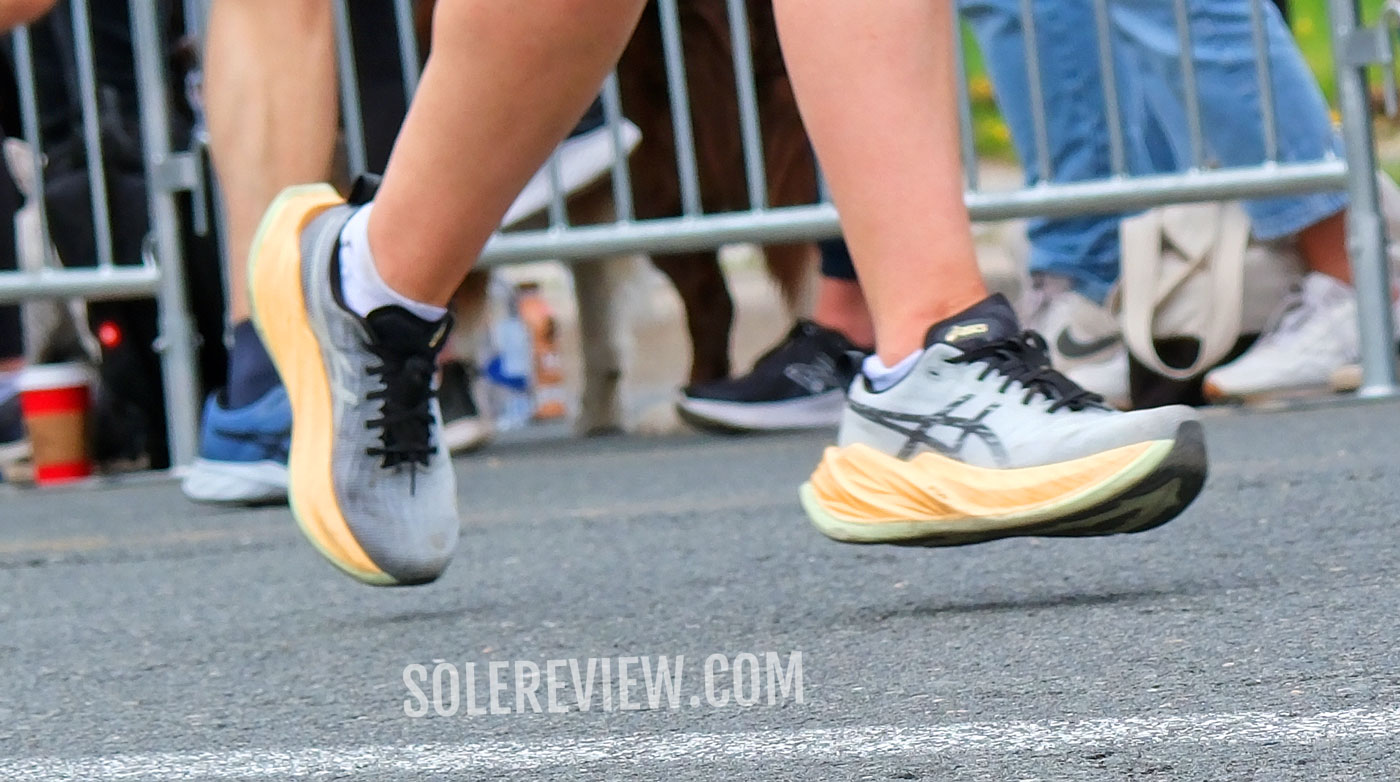
The cushioned Asics Superblast is versatile enough for nearly all kinds of runs – just like the Zoom Fly 5.
One way to pull up comparable shoes would be to focus just on Carbon-plated footwear. But that will turn out to be a reductive exercise. For instance, plated shoes like the Saucony Endorphin Speed 3 and Hoka Carbon X are different beasts with their quirks and characteristics.
A better way, in our opinion, is to stack the Nike Zoom Fly 5 against shoes that serve a similar purpose. In this case, we’re talking about highly-cushioned running shoes with a speed-friendly ‘snap’ in their ride and are more supportive than pure Pebax + plate racers.
The first candidate is the New Balance SuperComp Trainer 2 – this year’s follow-up to the sleeper hit of 2022.
This high-stack trainer combines a generous amount of cushioning with a full-length Carbon plate. This combination makes the SC Trainer 2 good for long-distance training runs as well as marathons.
We also view the Asics Superblast as a comparable shoe. While the midsole lacks a plate, the ride comfort is marathon-worthy. The rocker profile makes the shoe tempo-friendly, as it helps the foot roll forward during the gait cycle.
Brooks sells the Hyperion Max – it rides like the lower-profile Hyperion, but with a taller midsole and more ride comfort.
Finally, while we don’t have any miles on the Kinvara Pro yet, it sounds similar to the Zoom Fly. Like the Nike shoe, it features a dual-density midsole with a full-length Carbon plate, and advertises itself as the super-shoe for the masses. More information will be available once we test the Kinvara Pro.
Do you own this shoe? Improve this review by sharing your insights.

